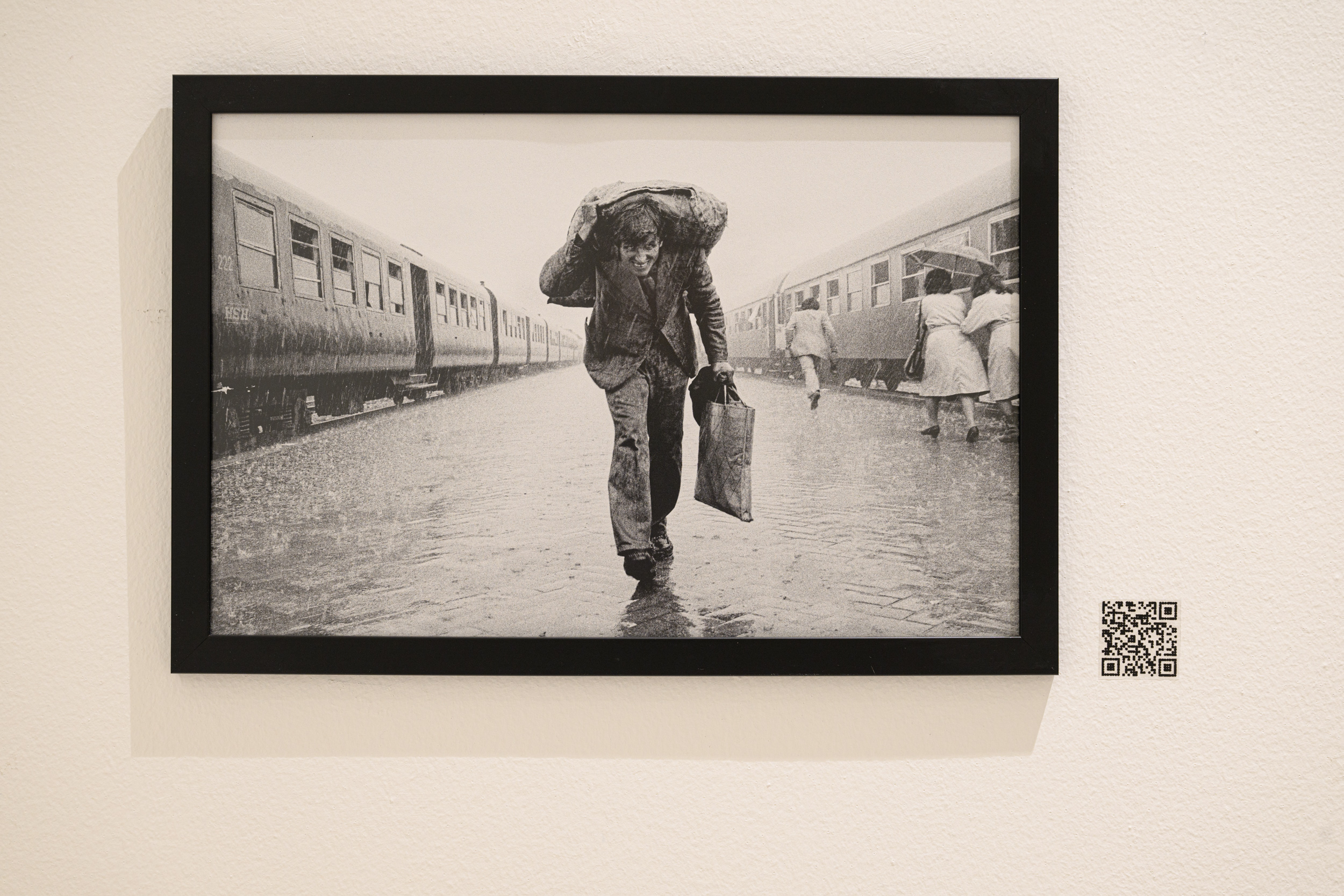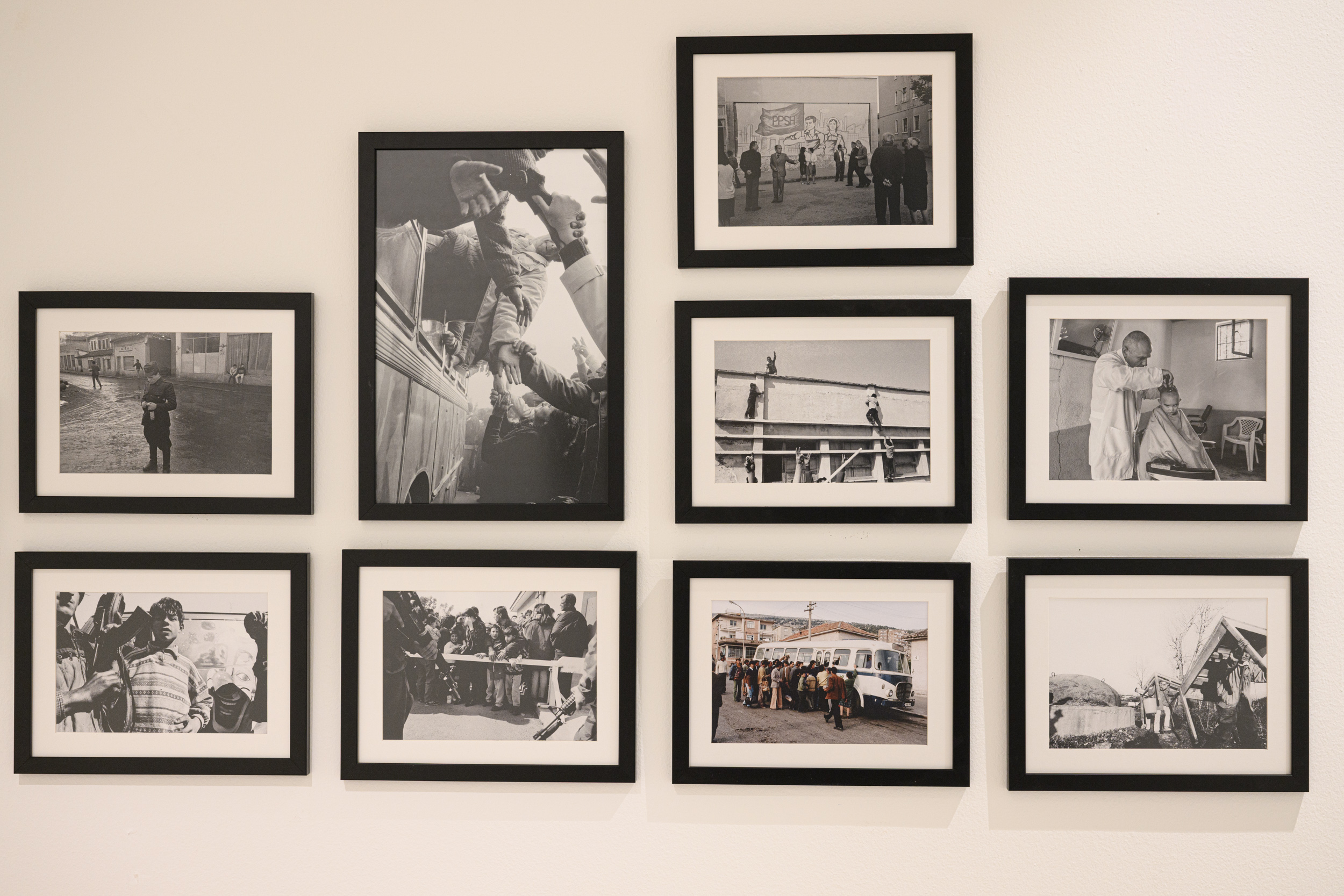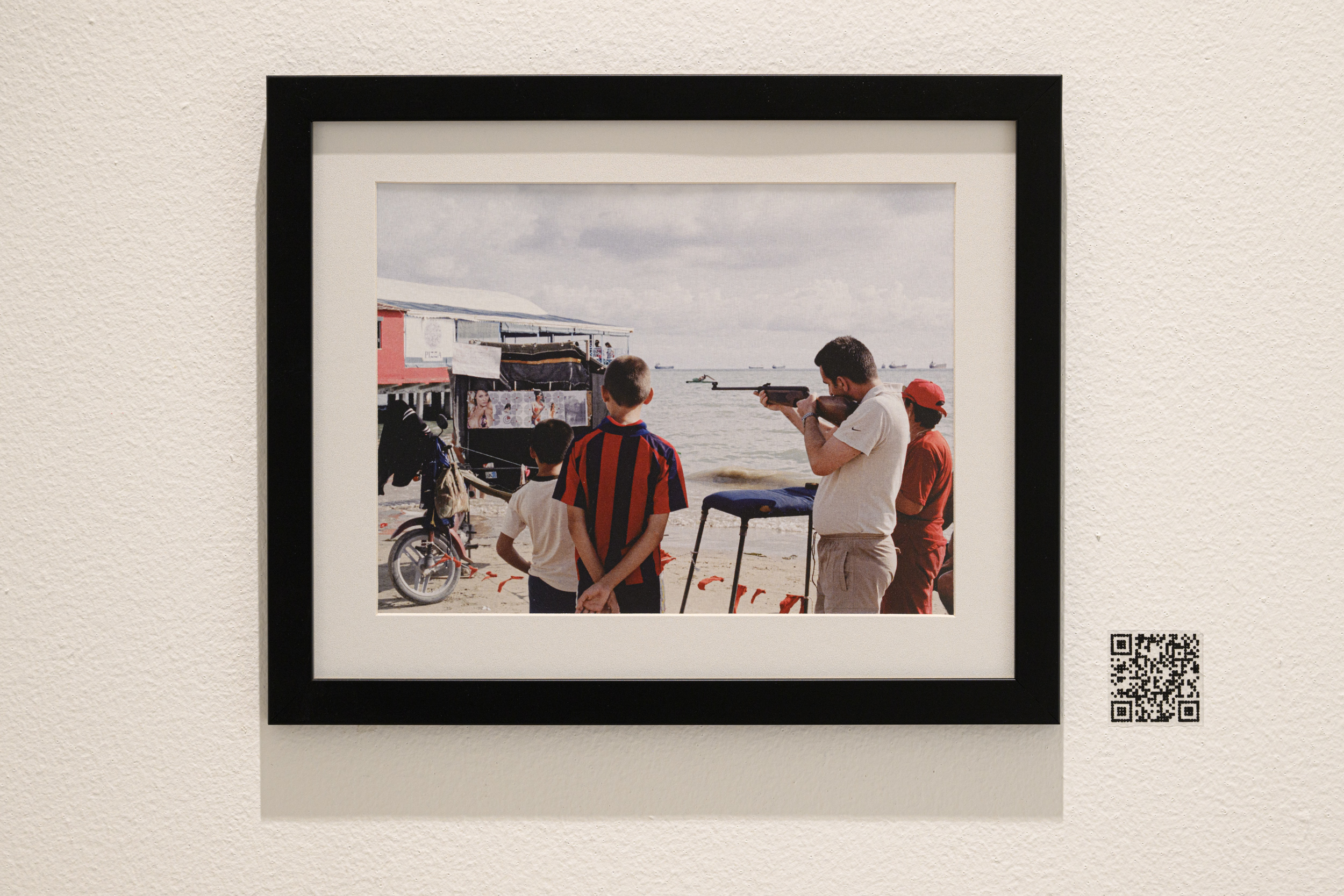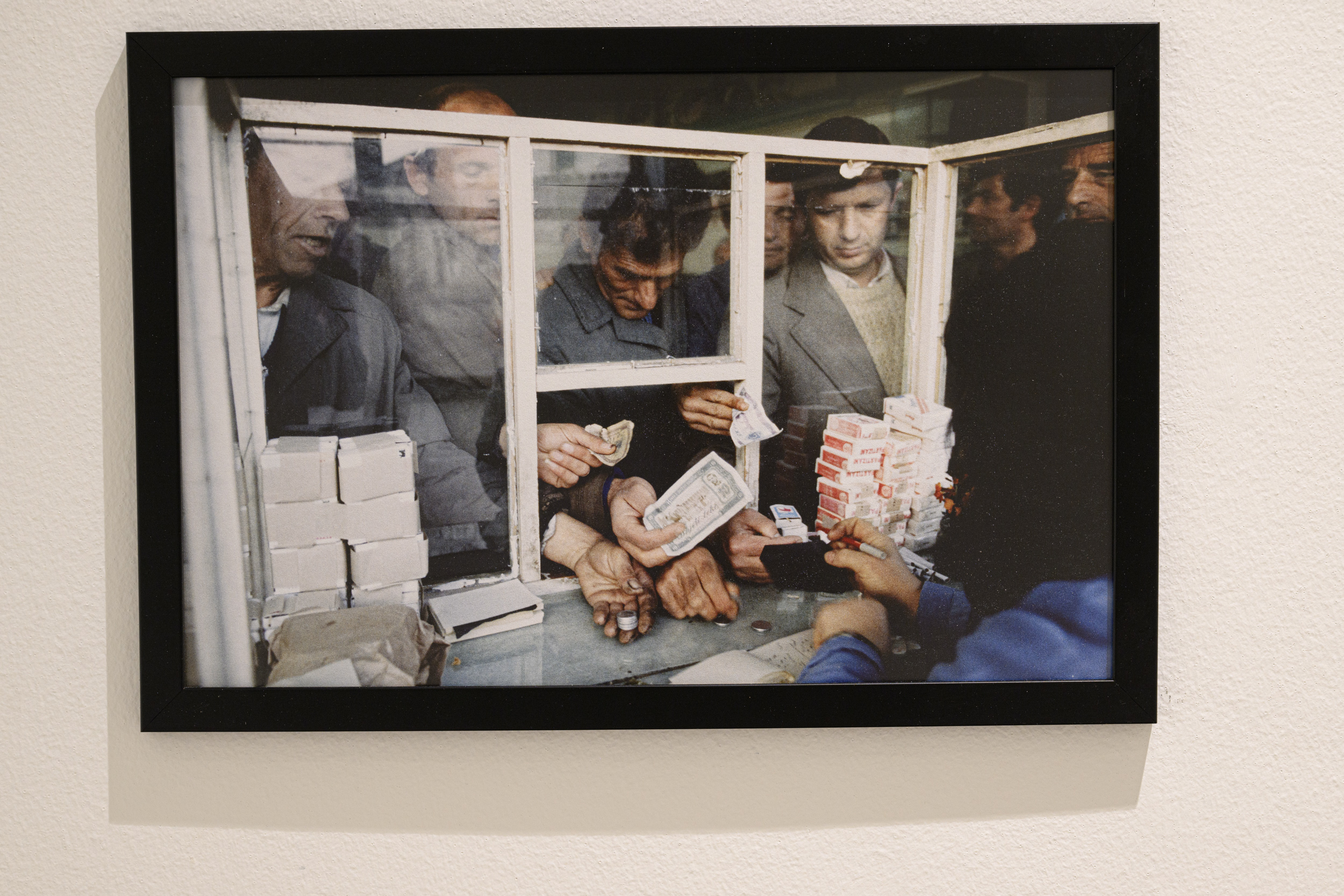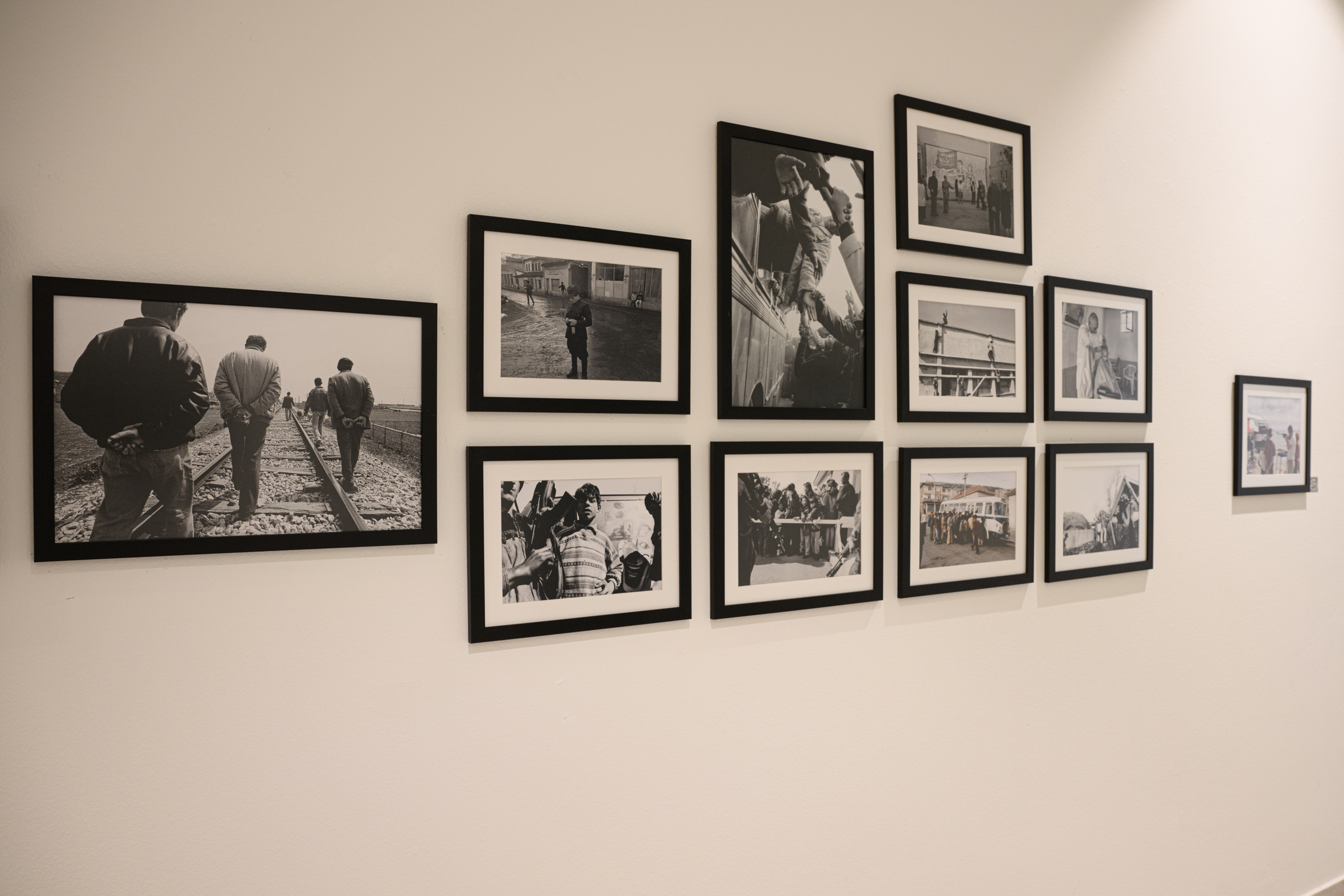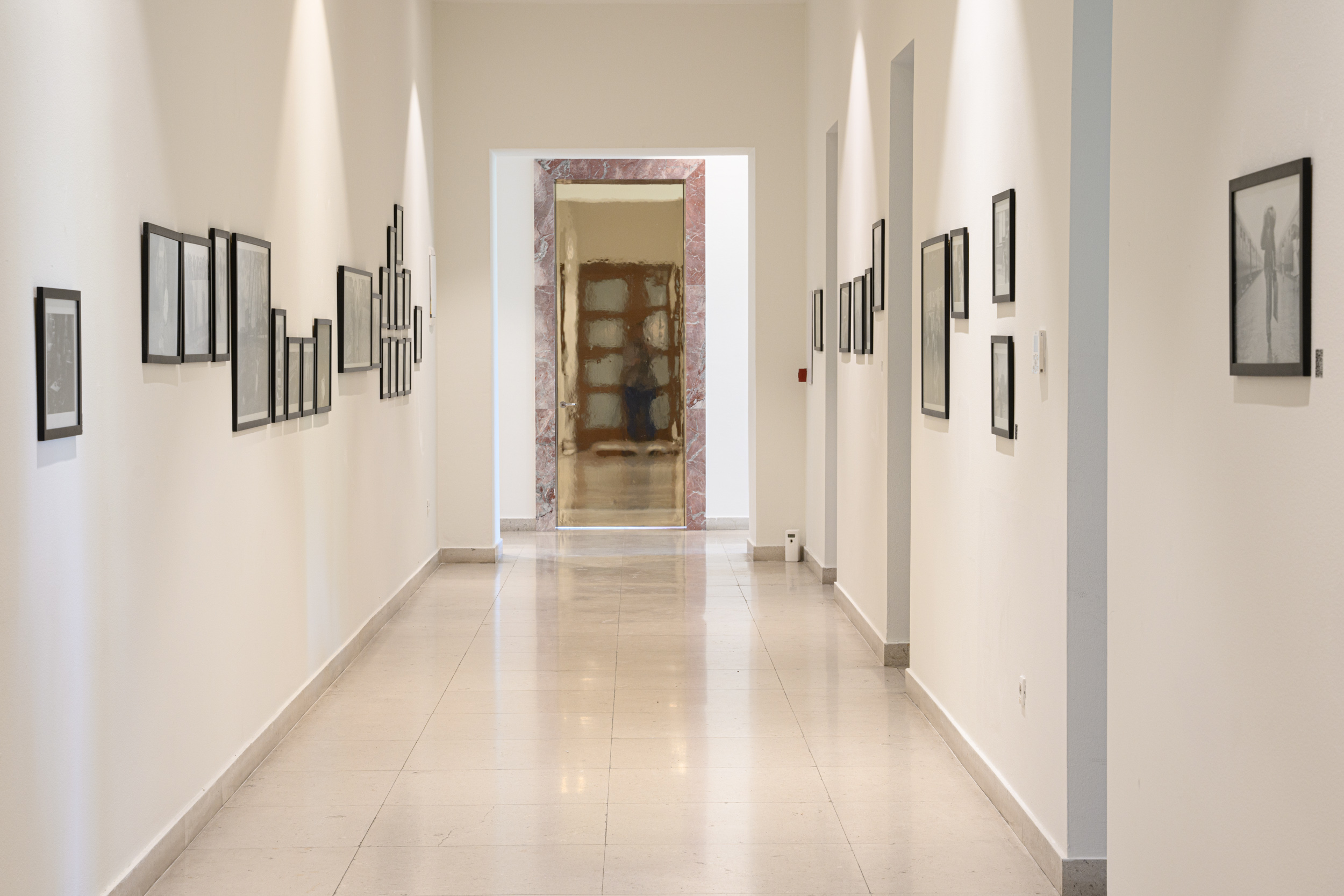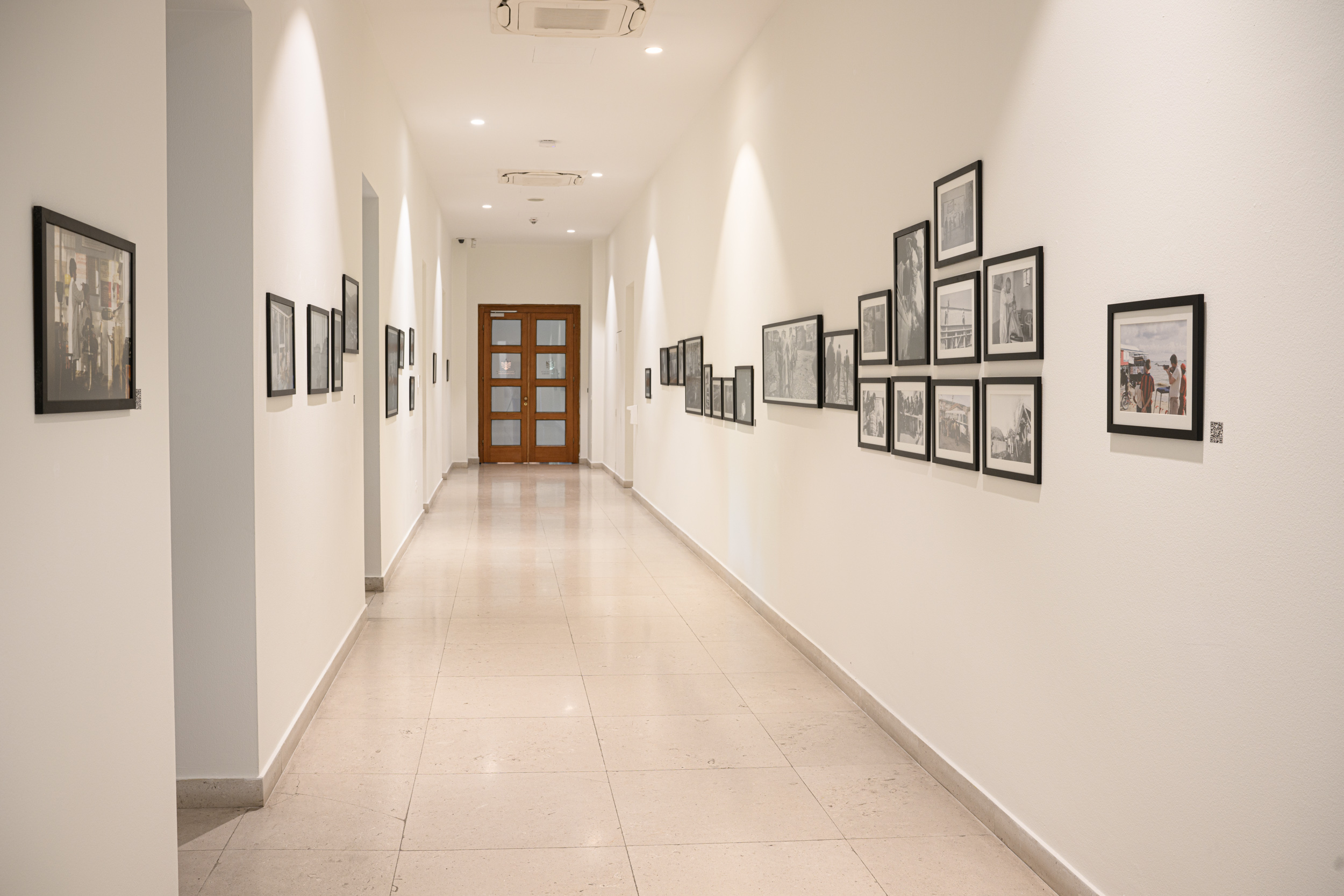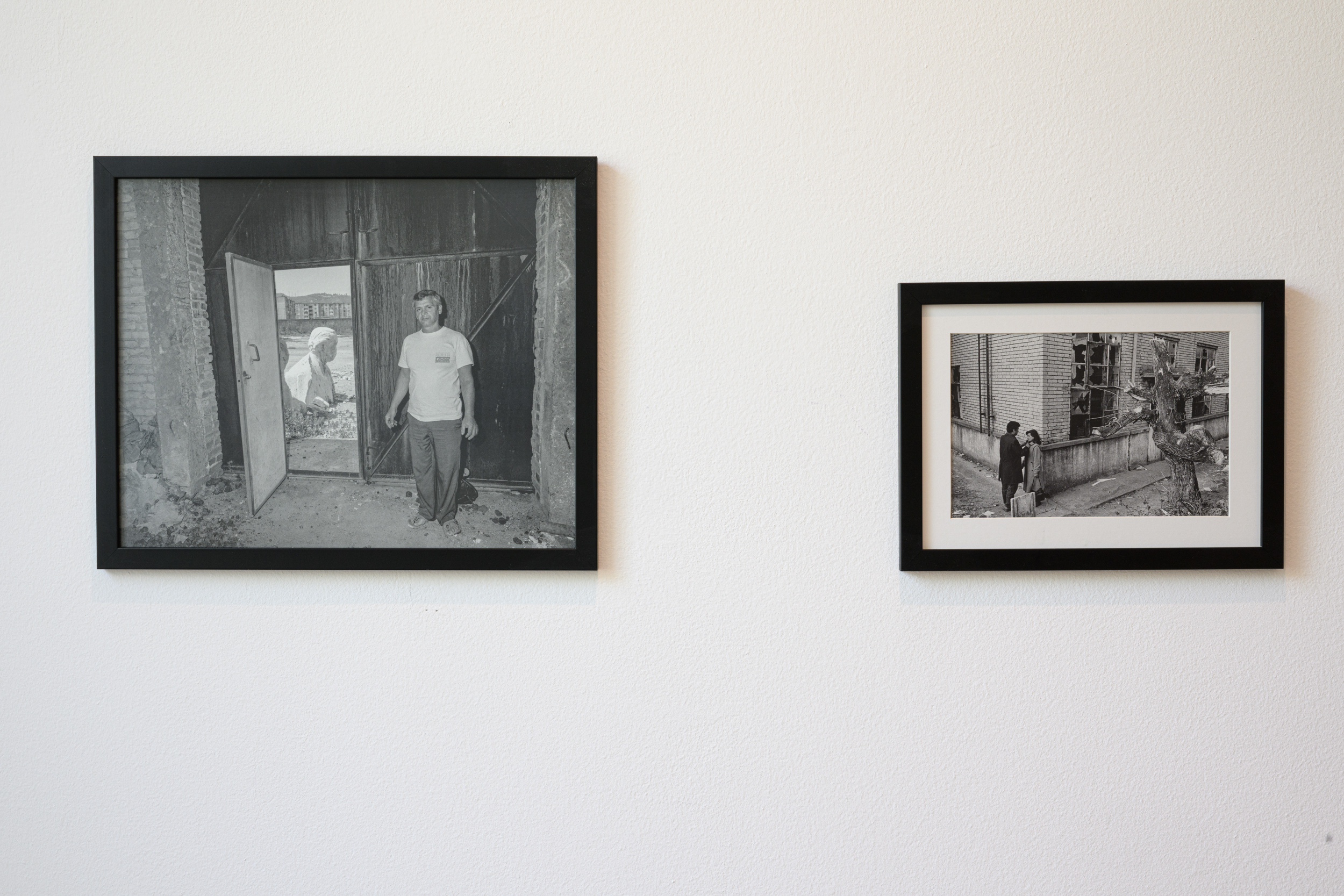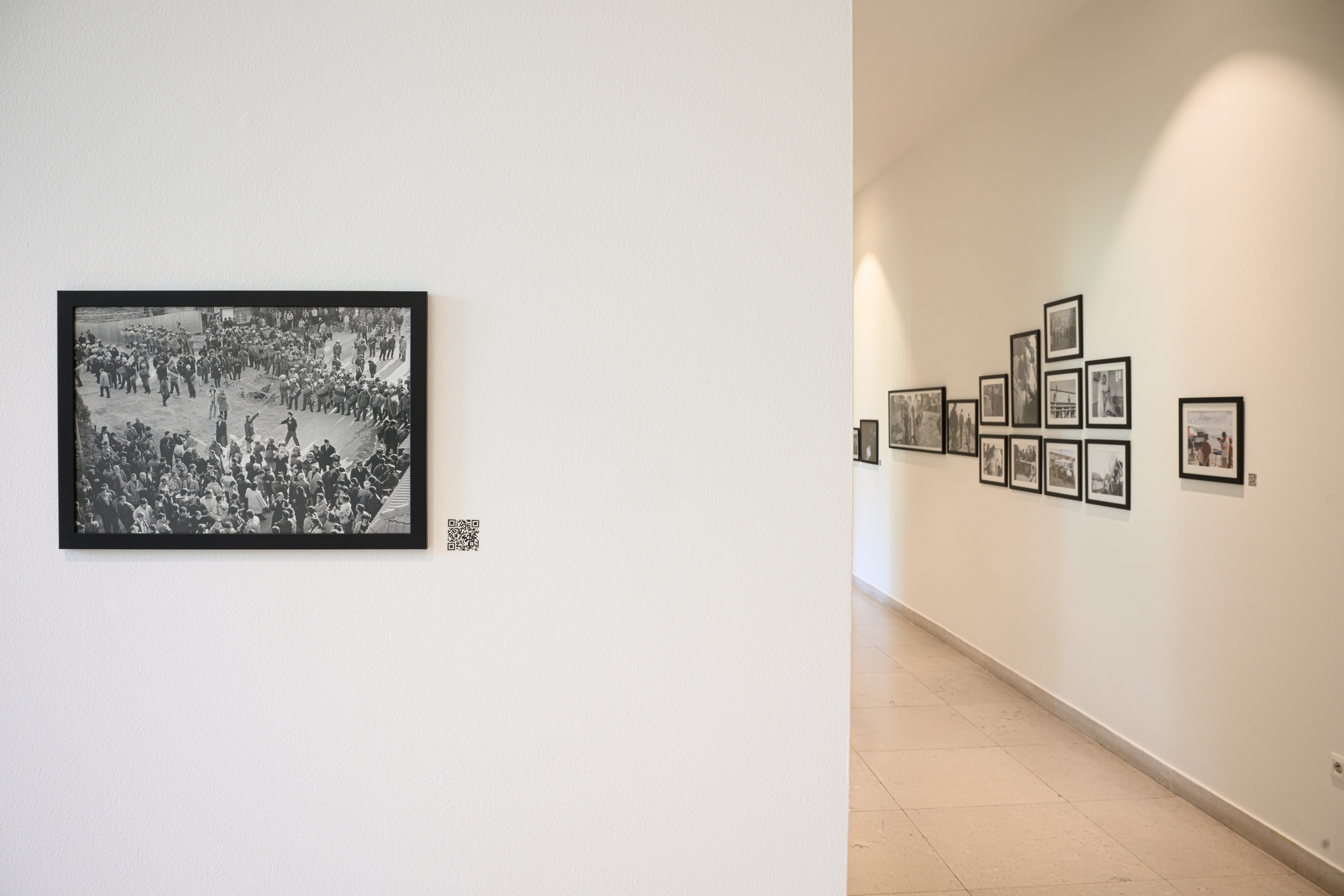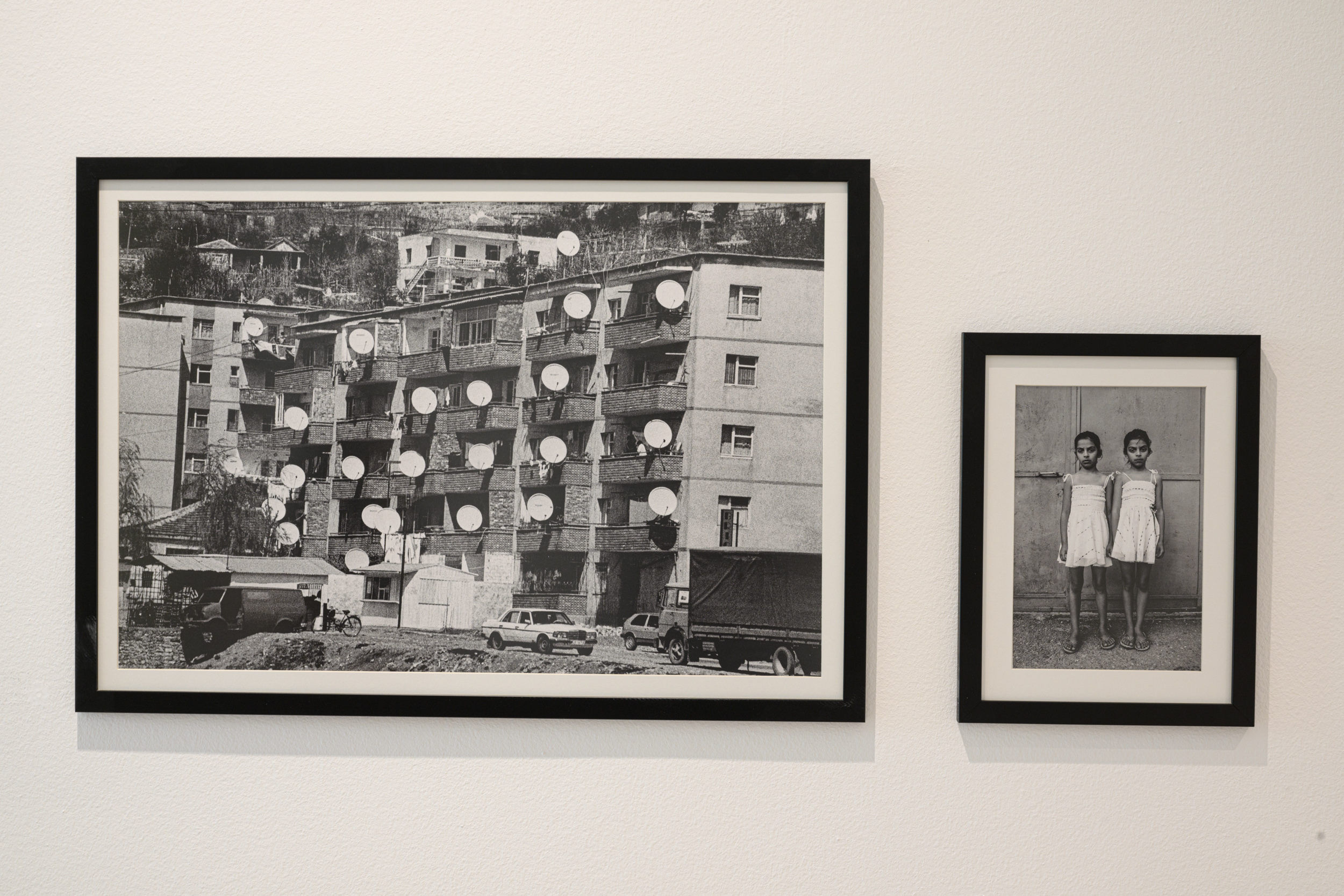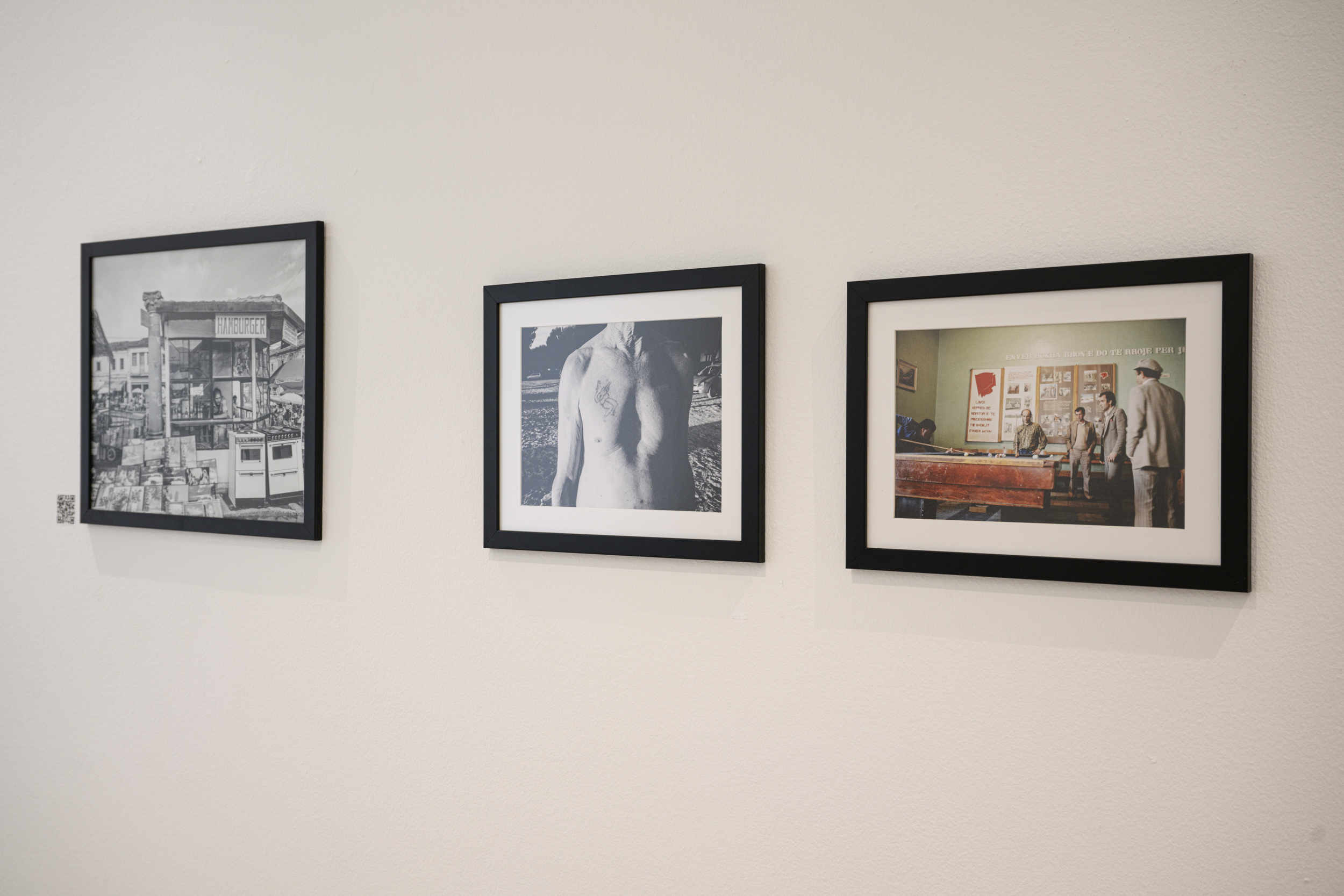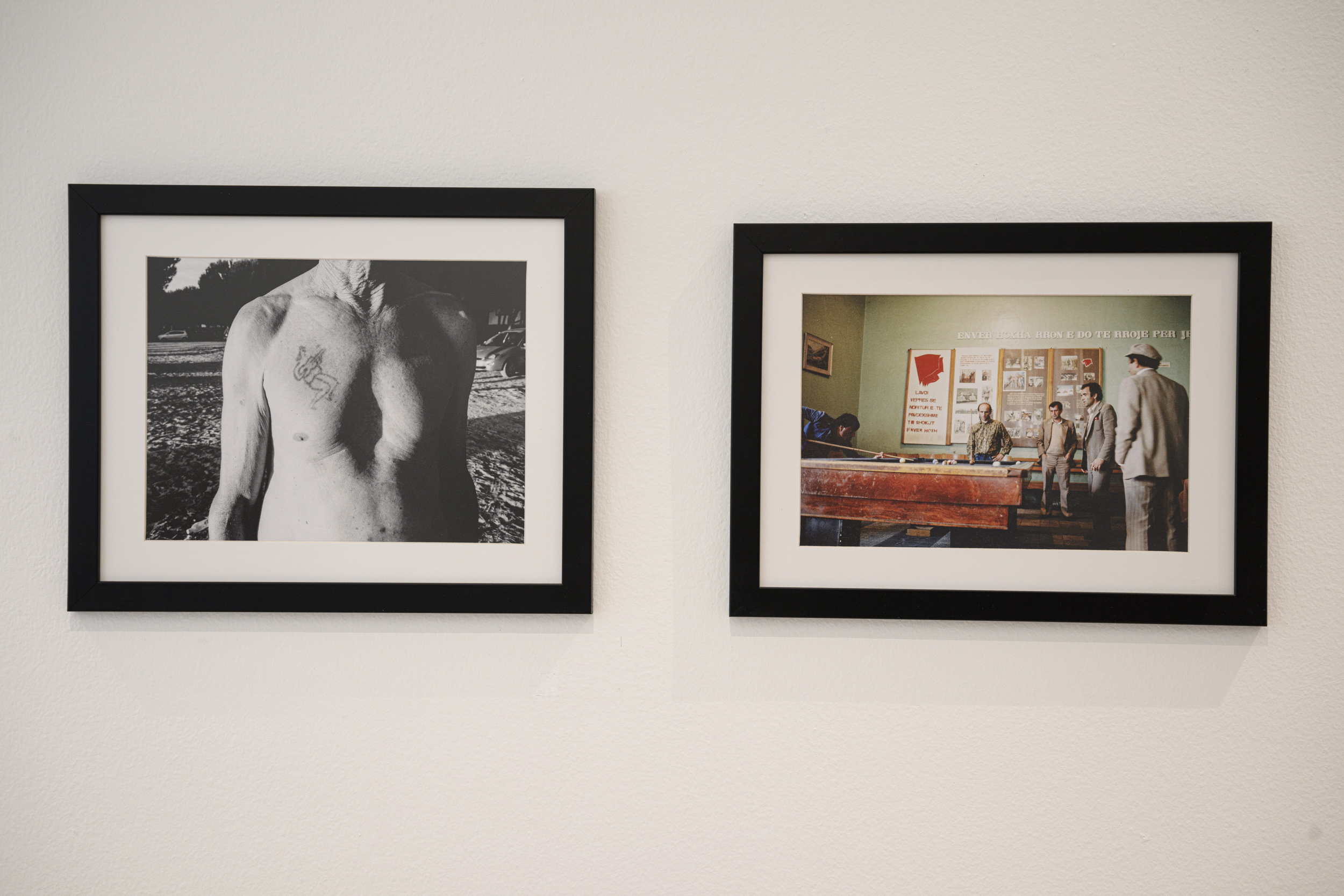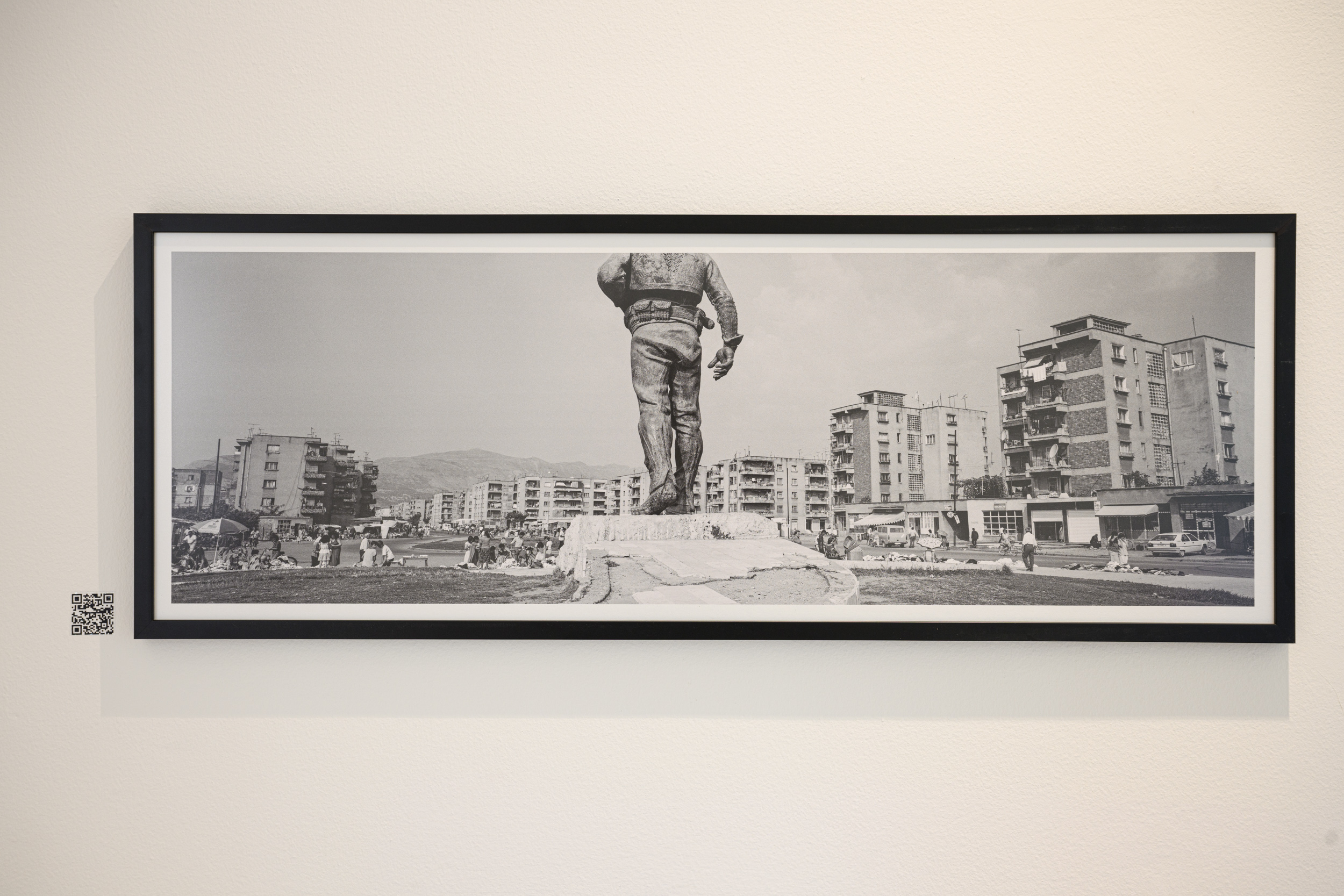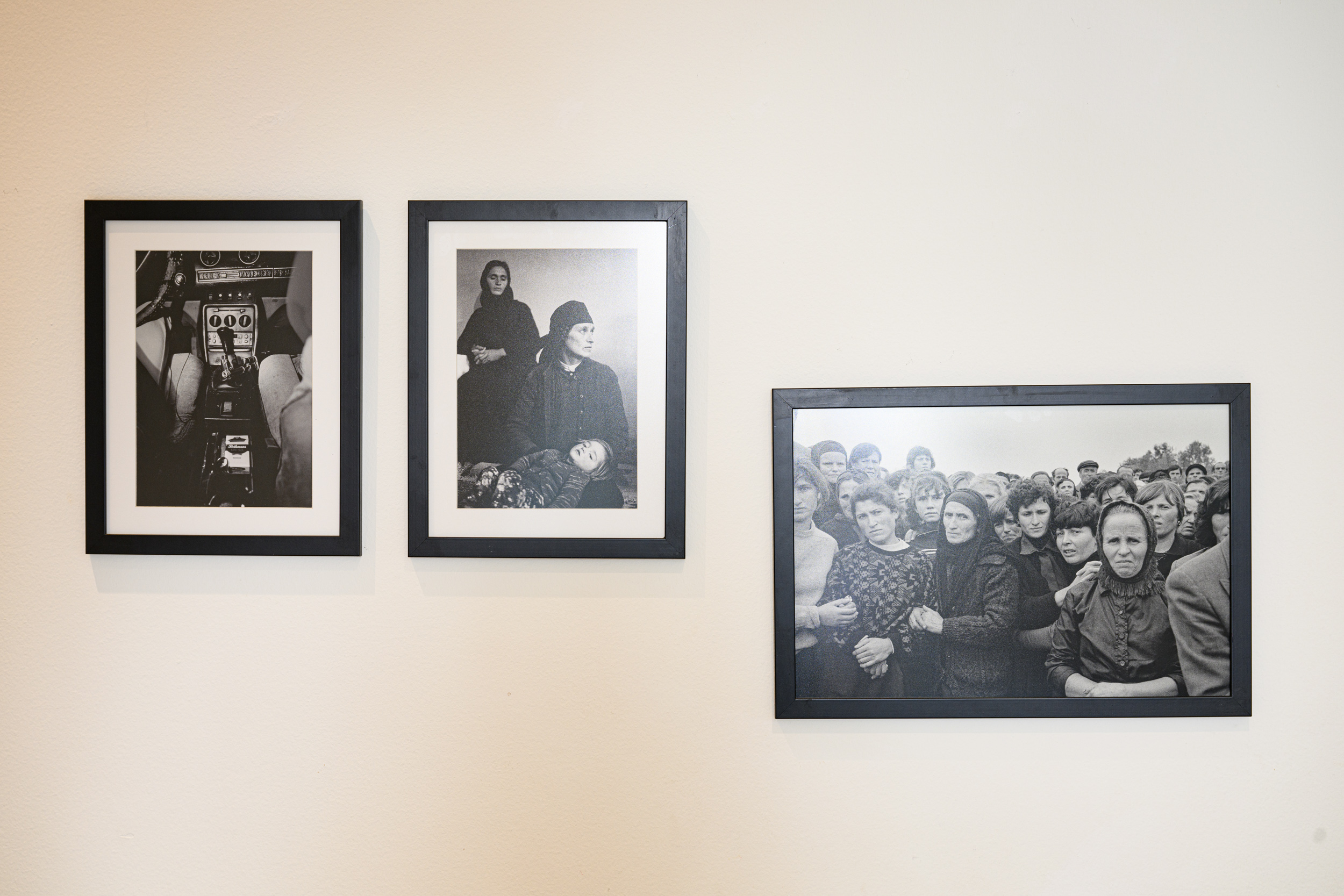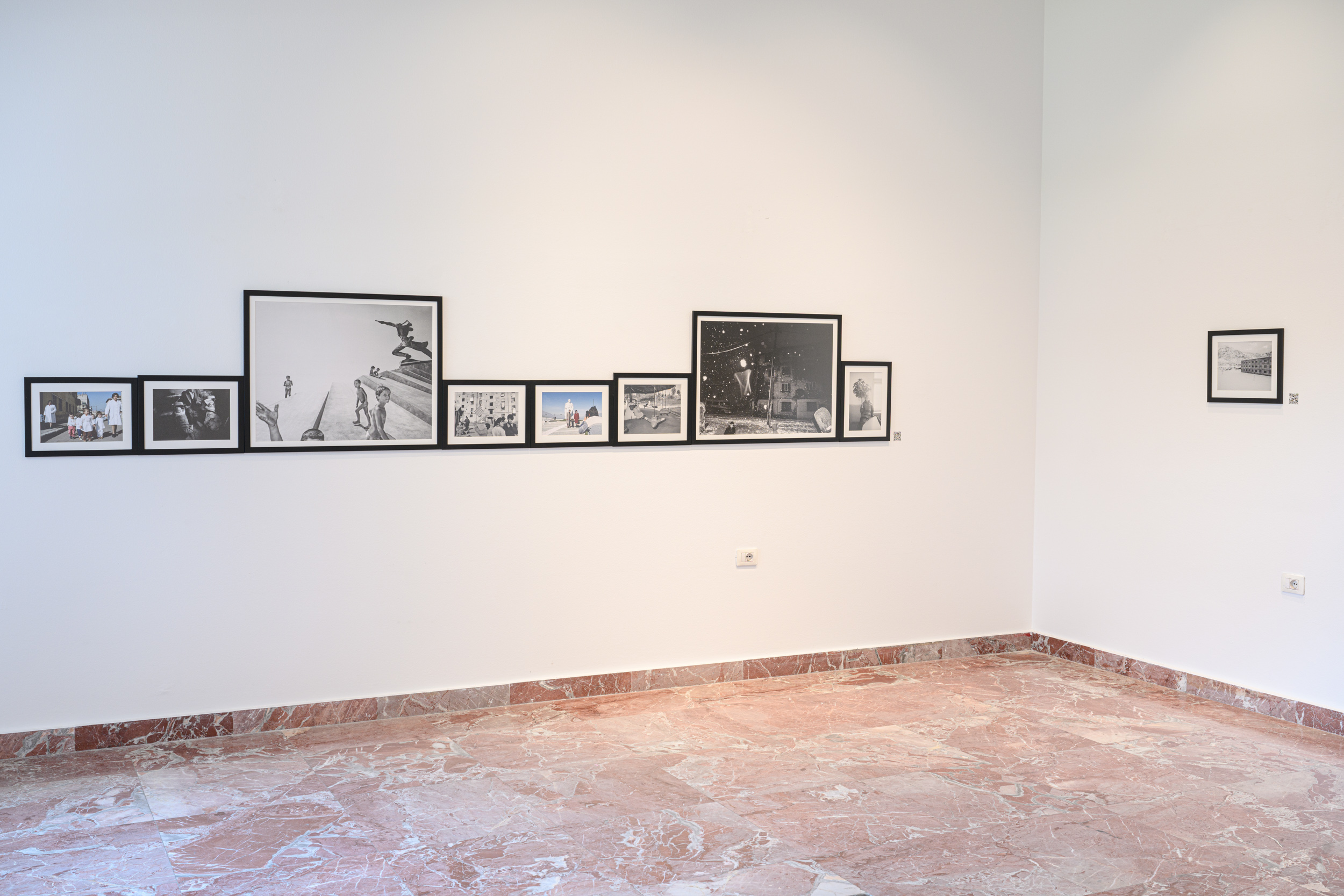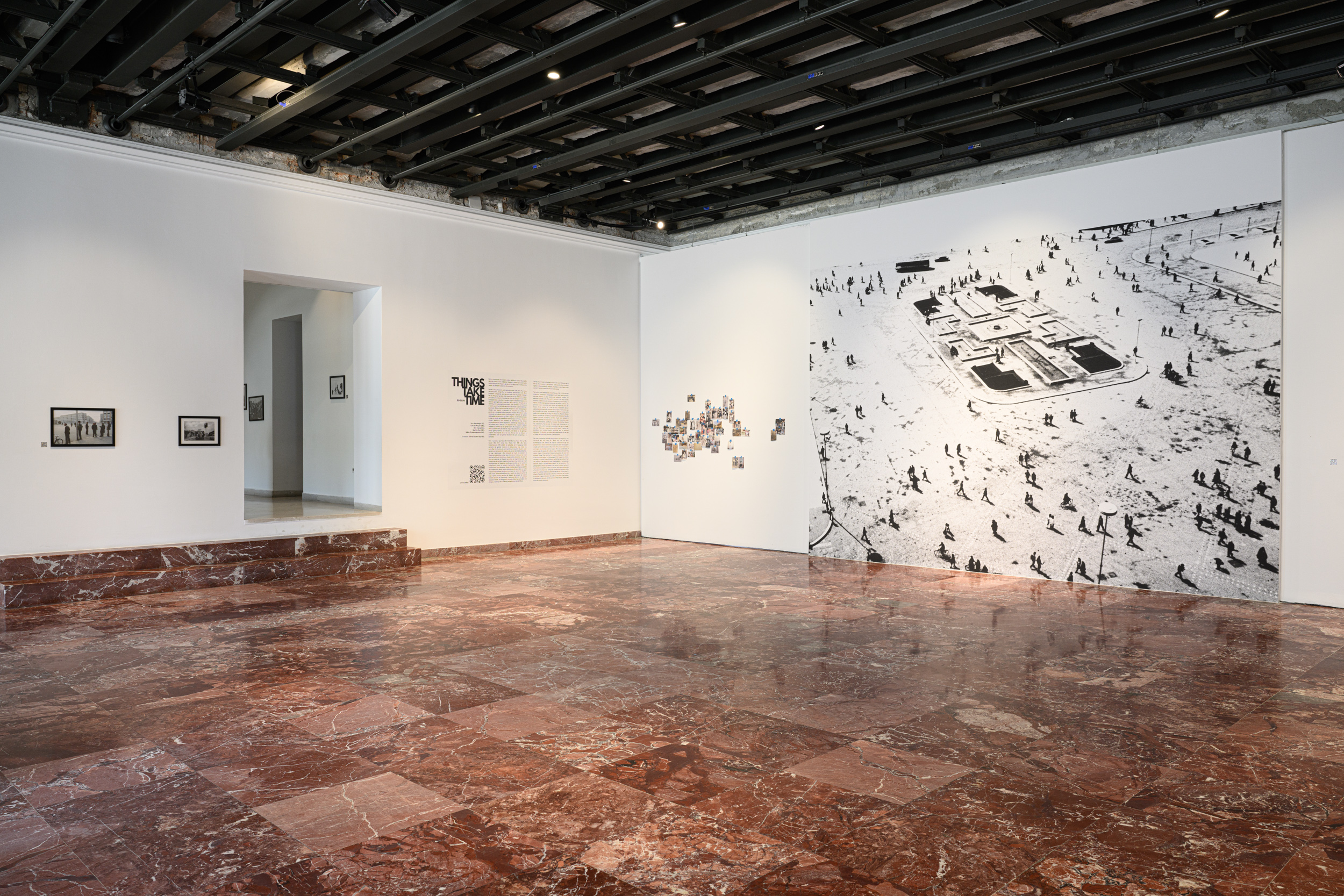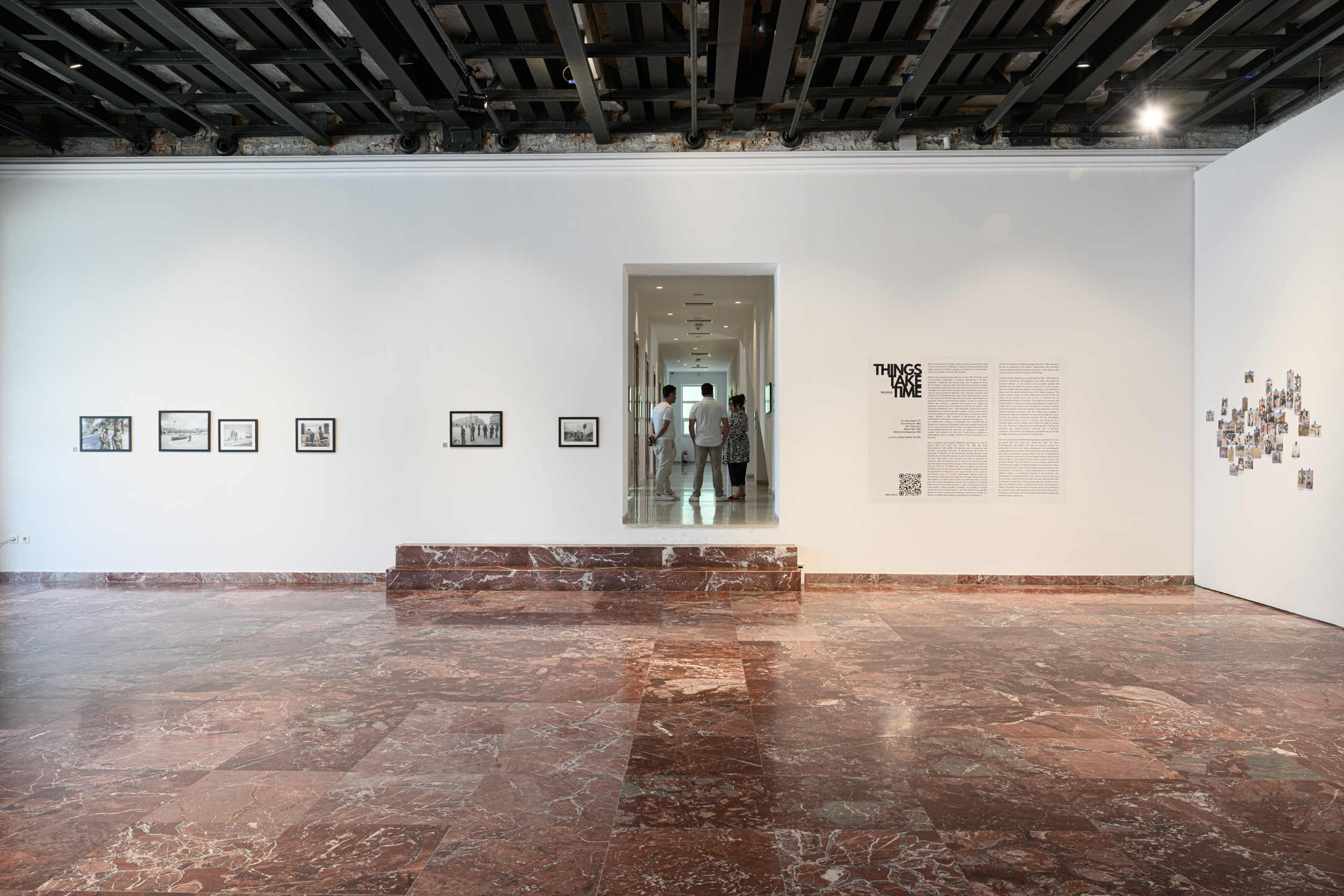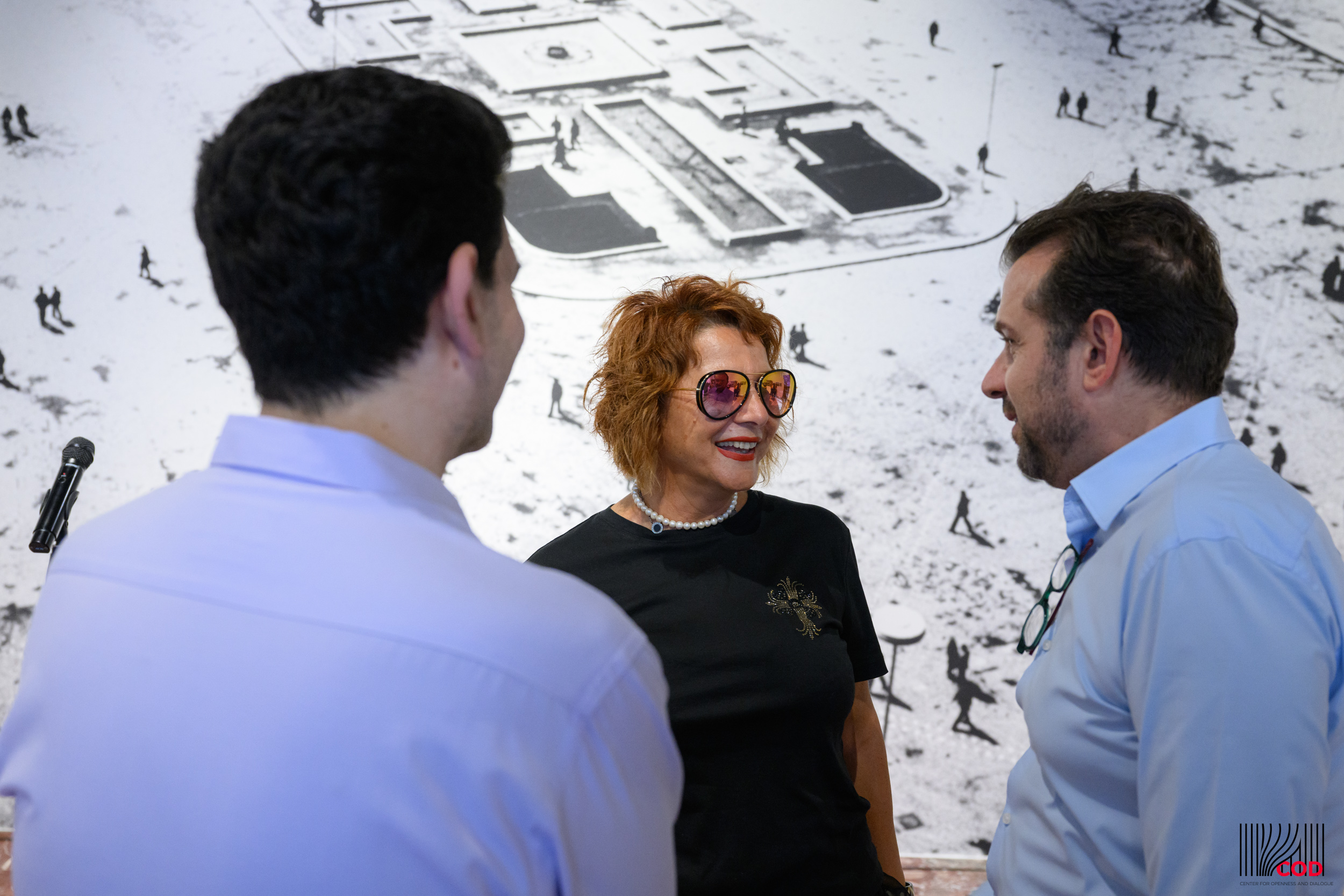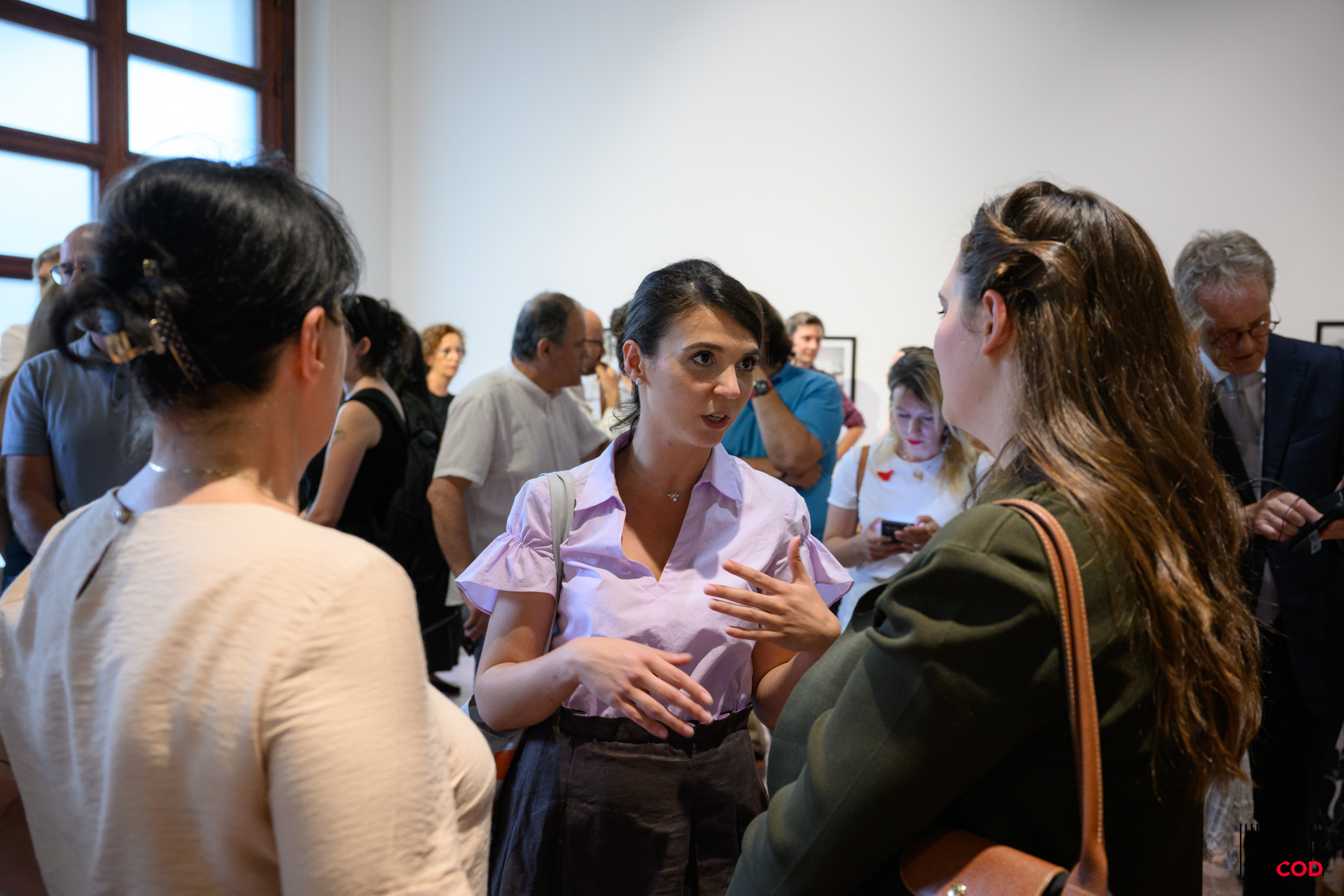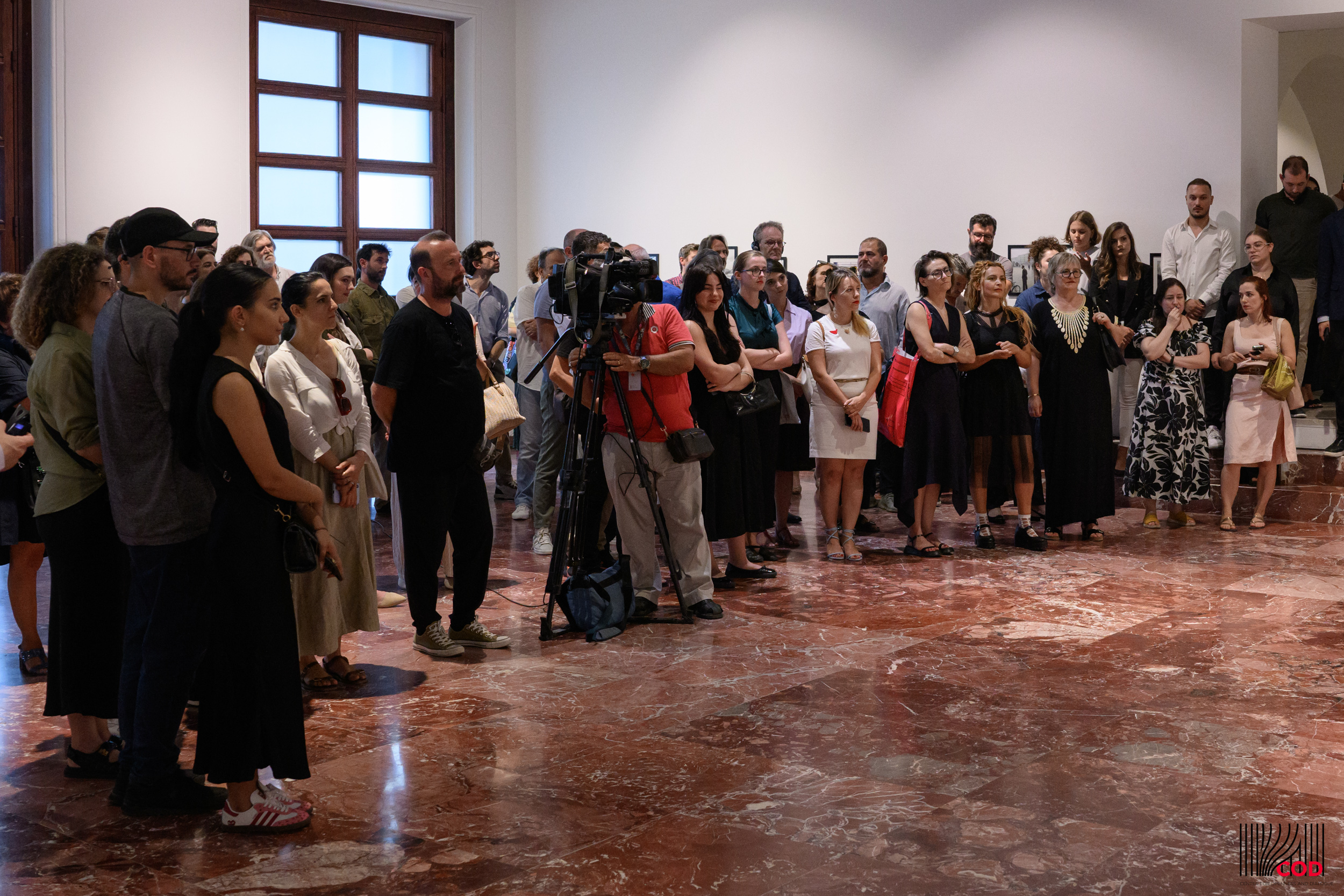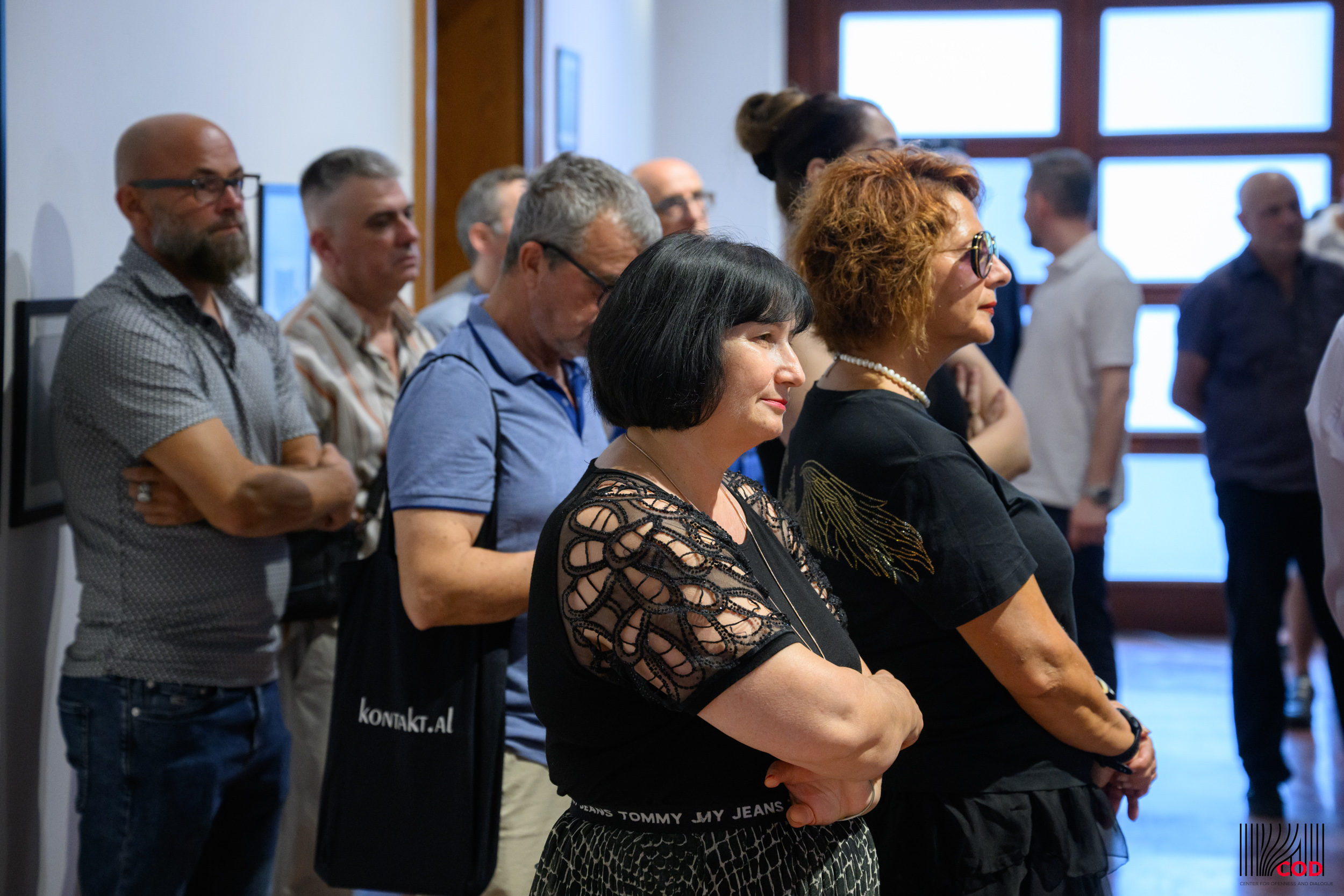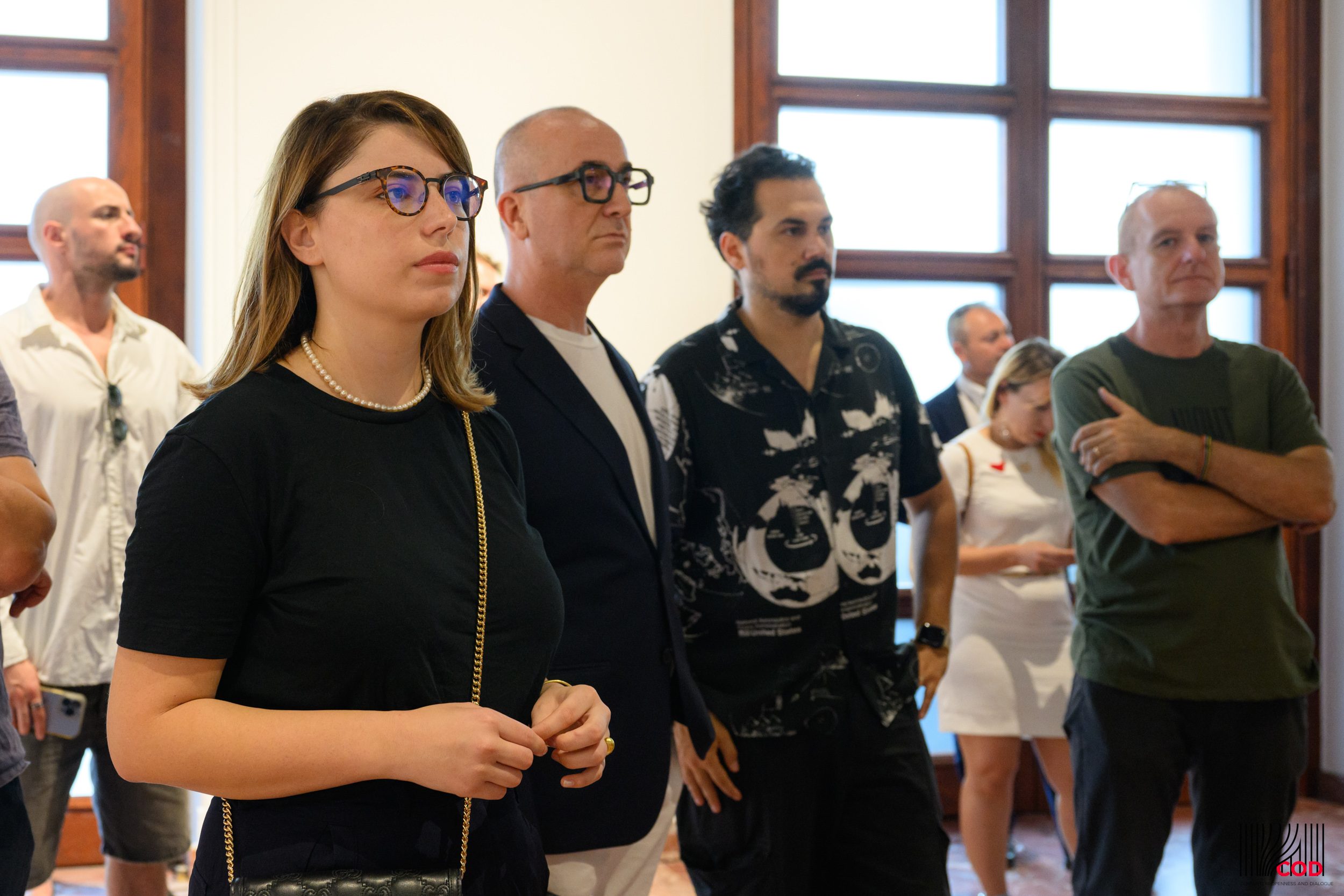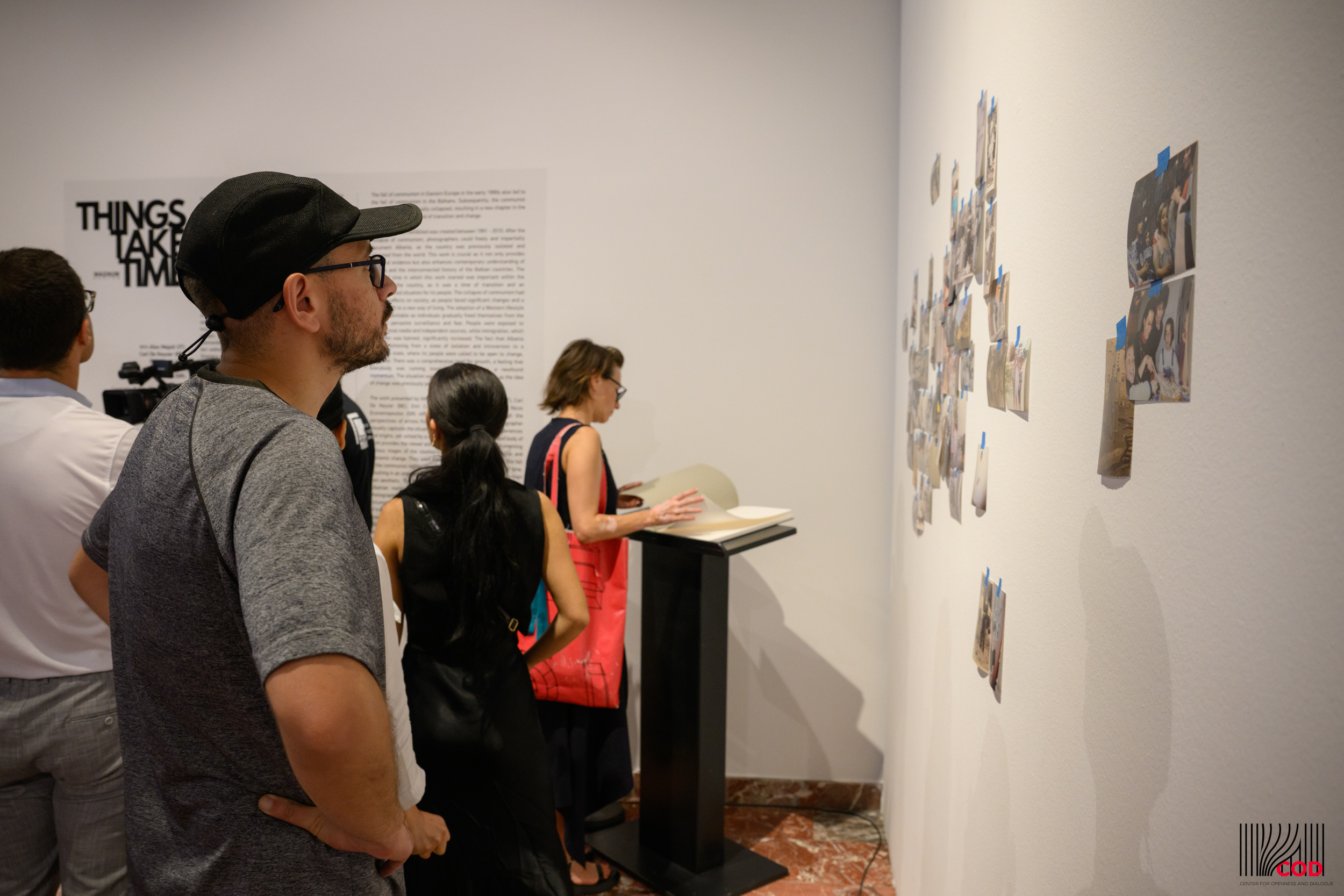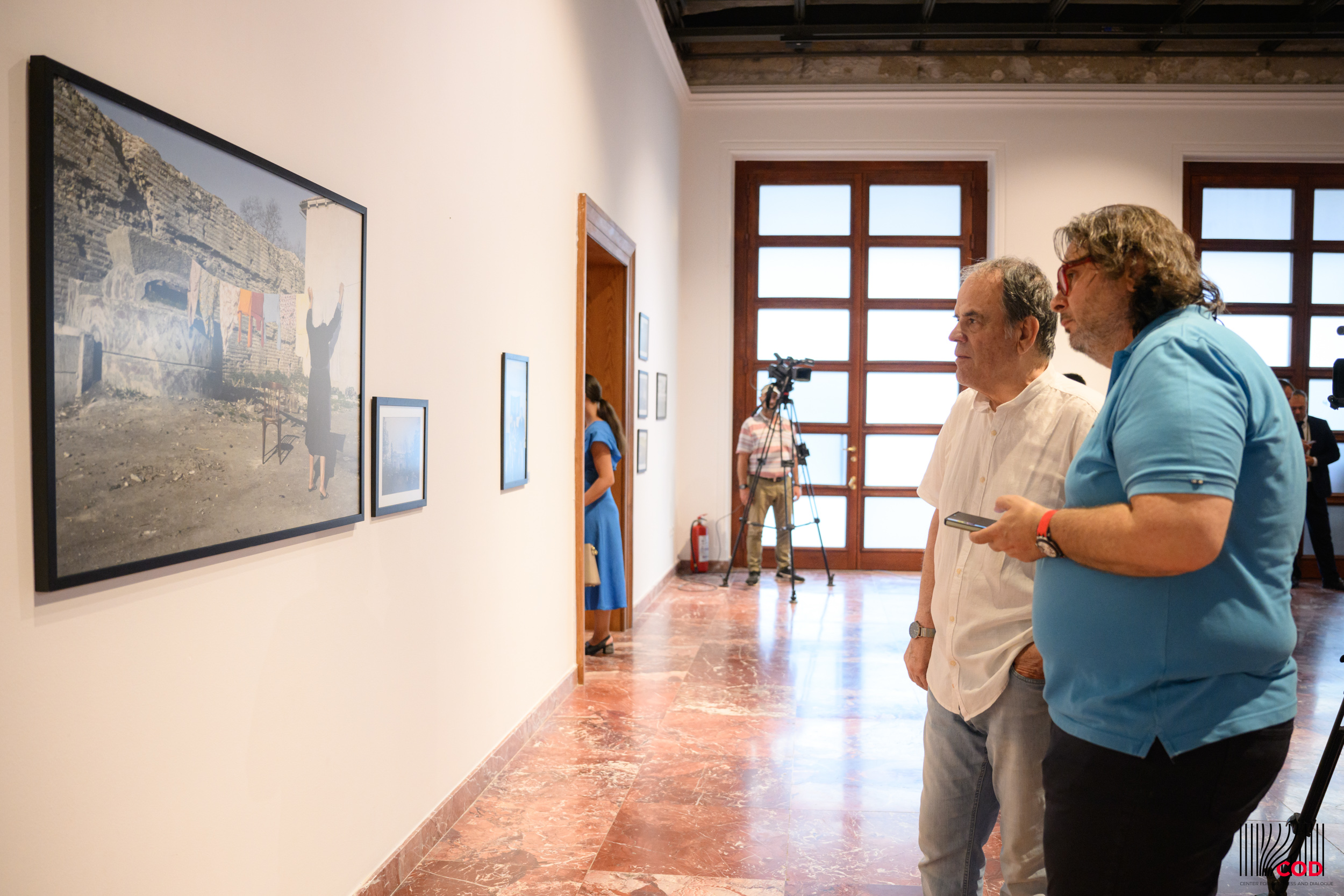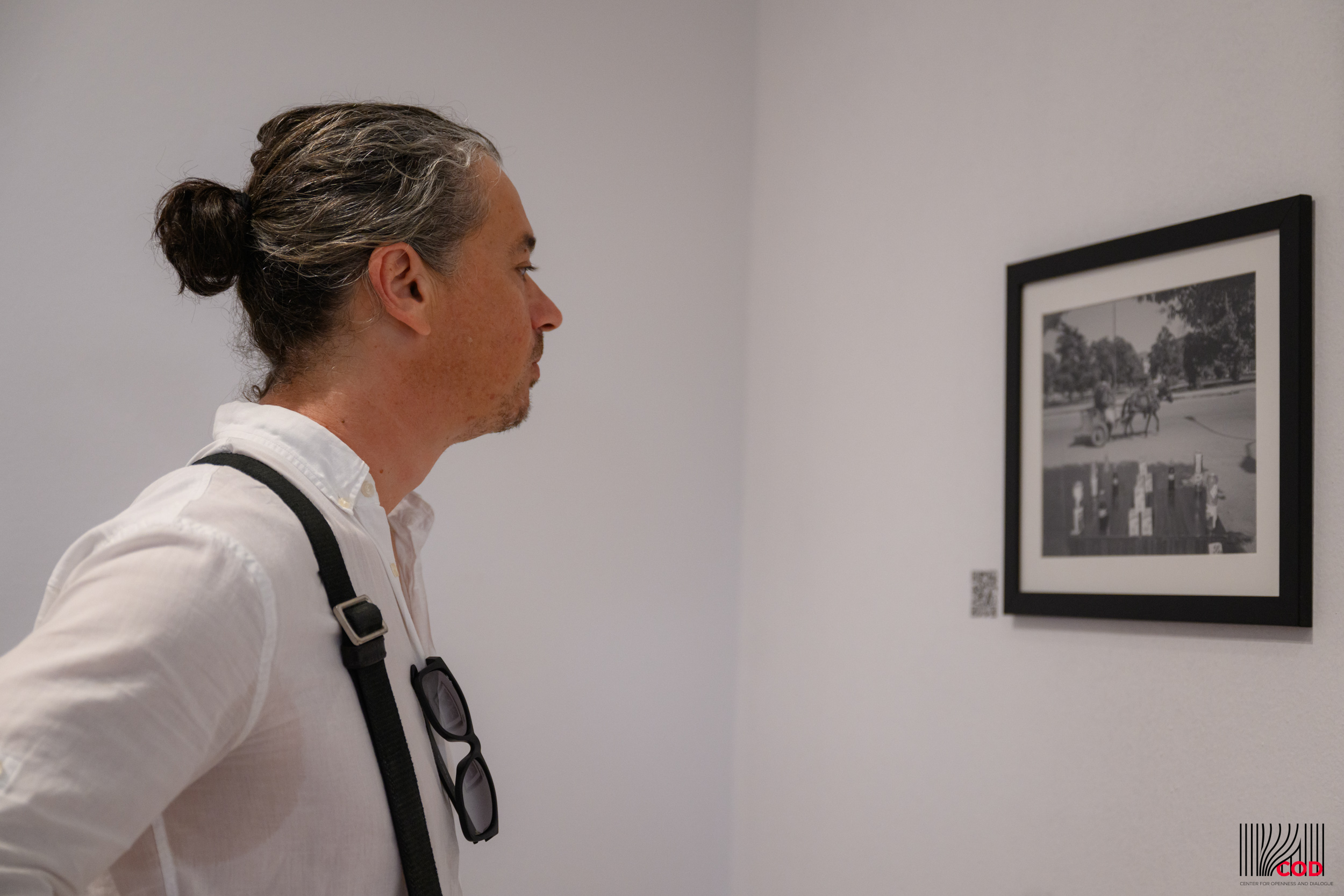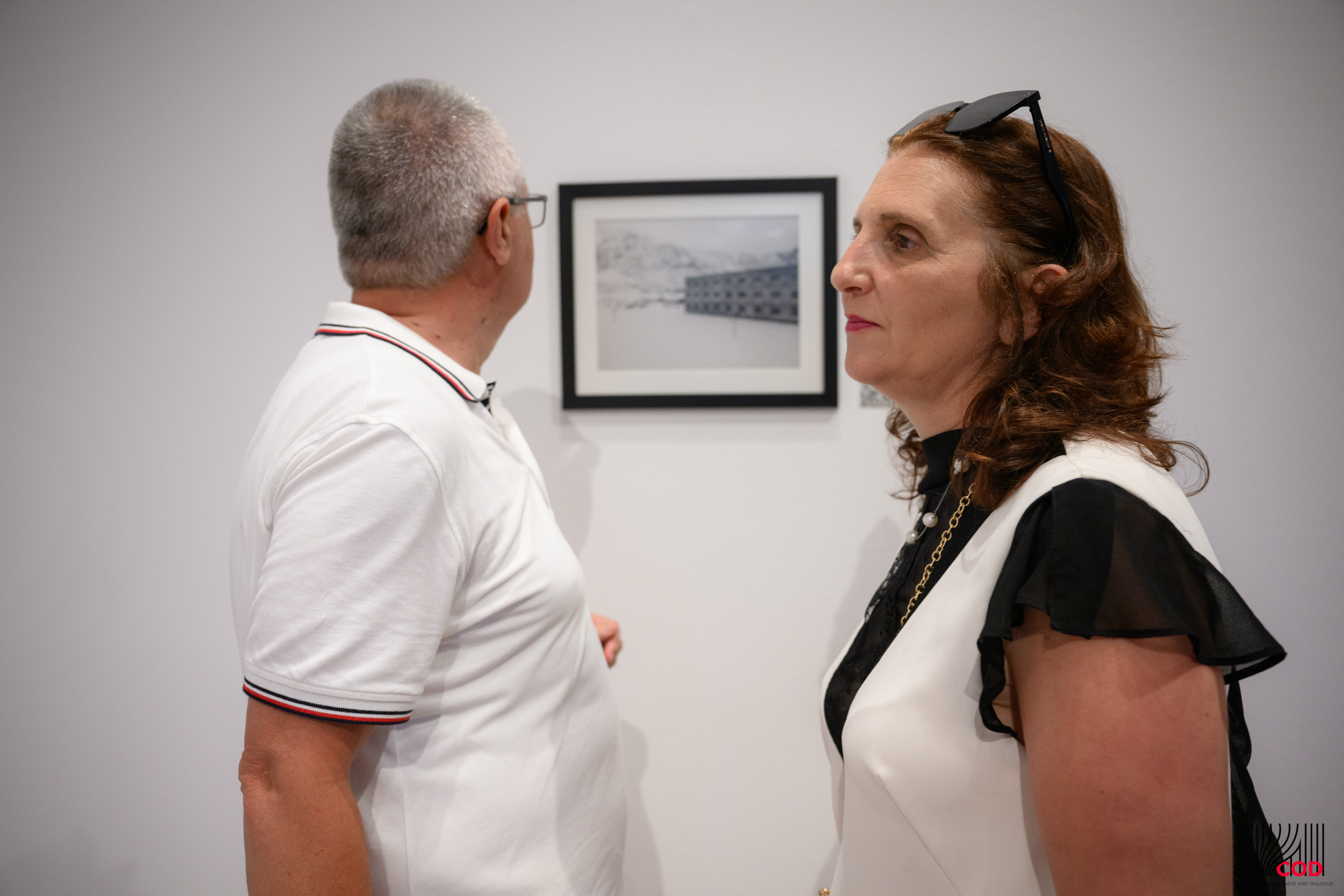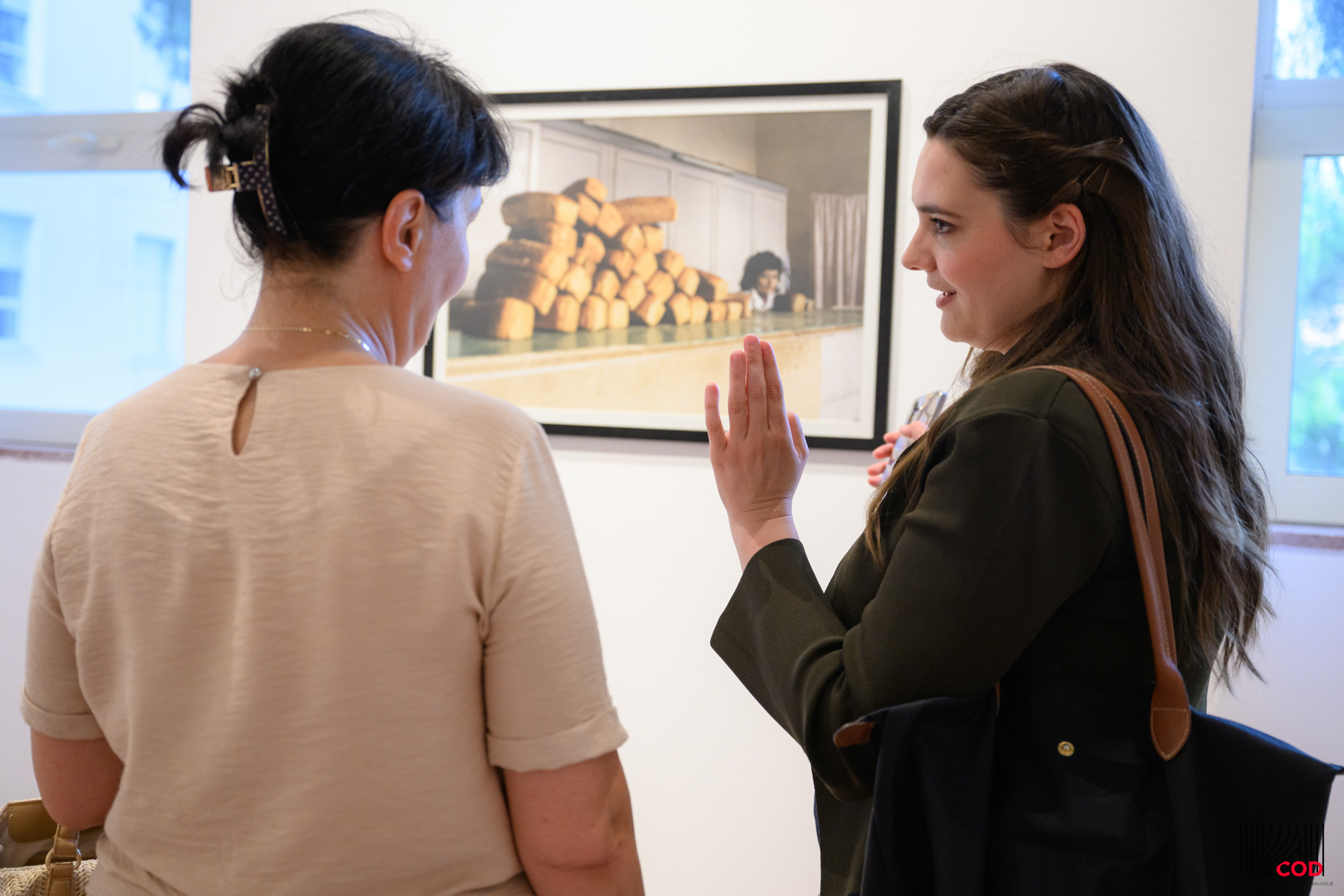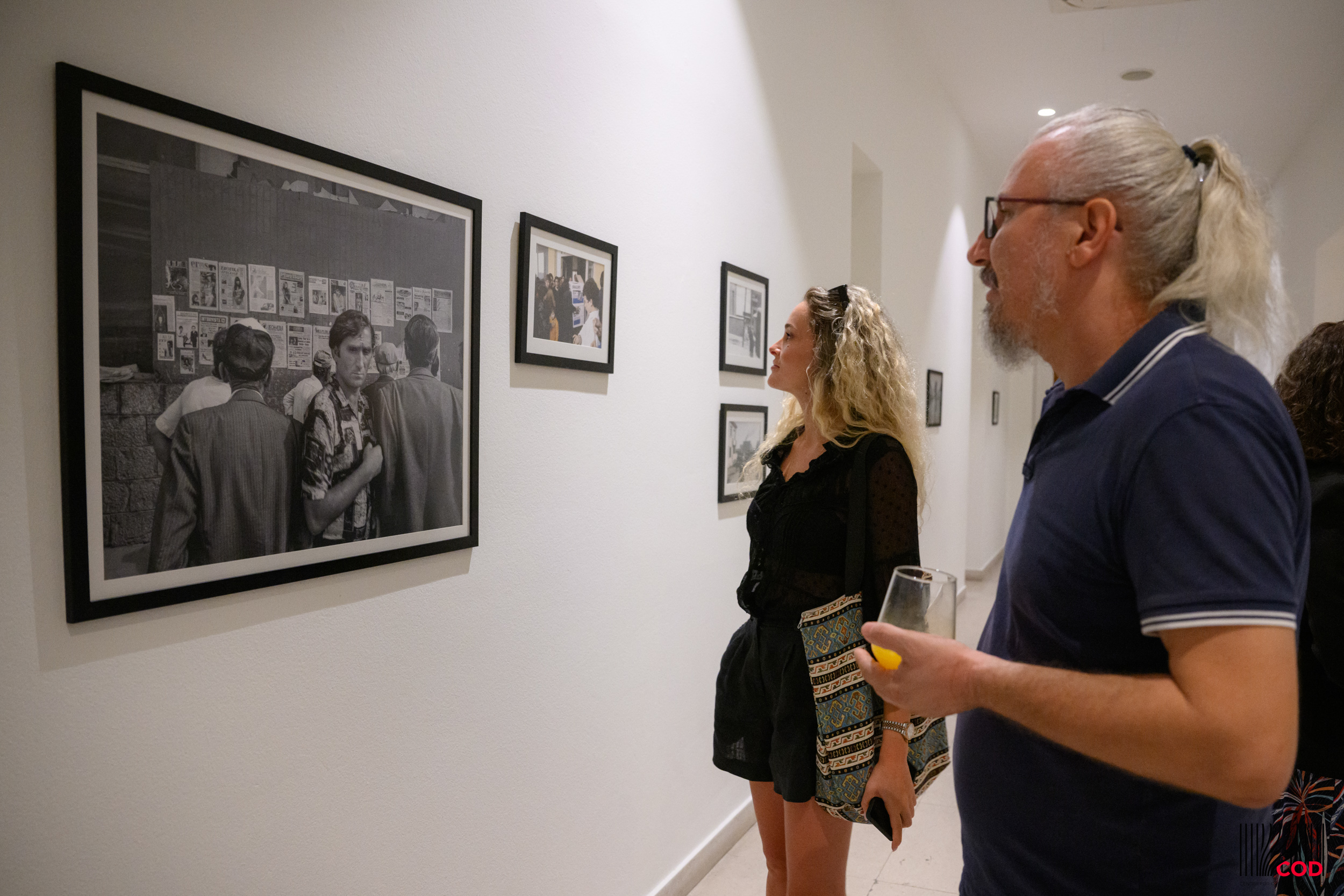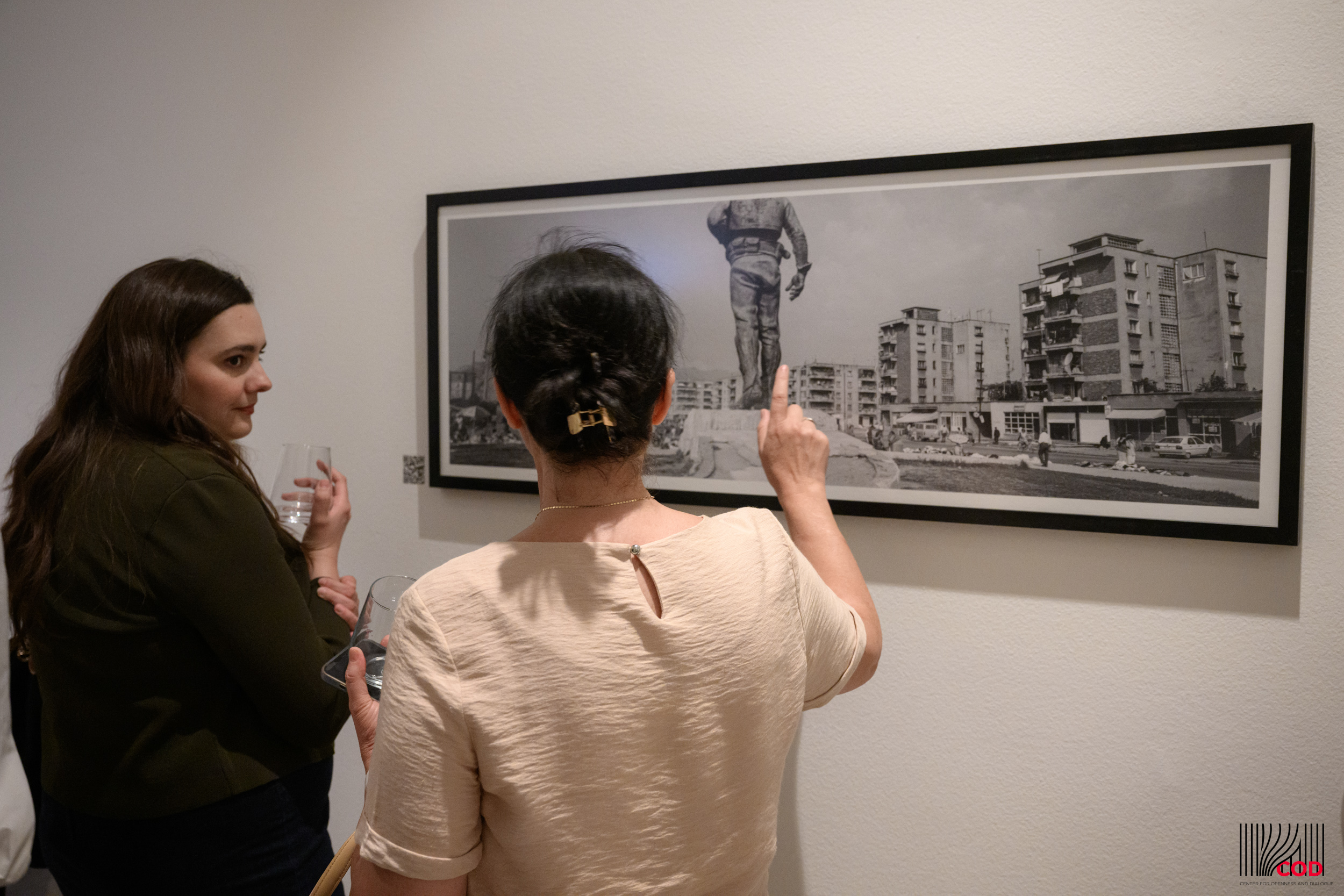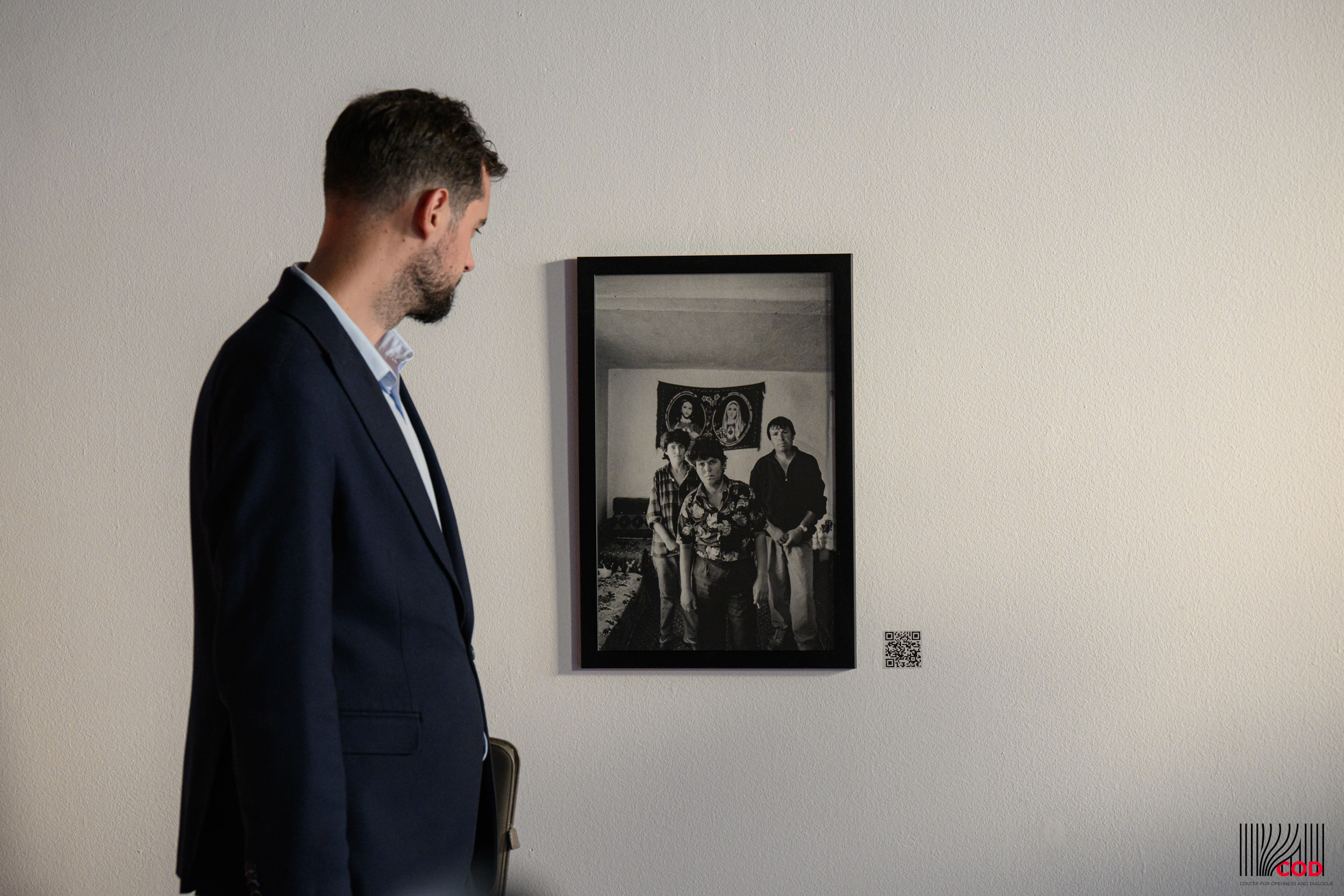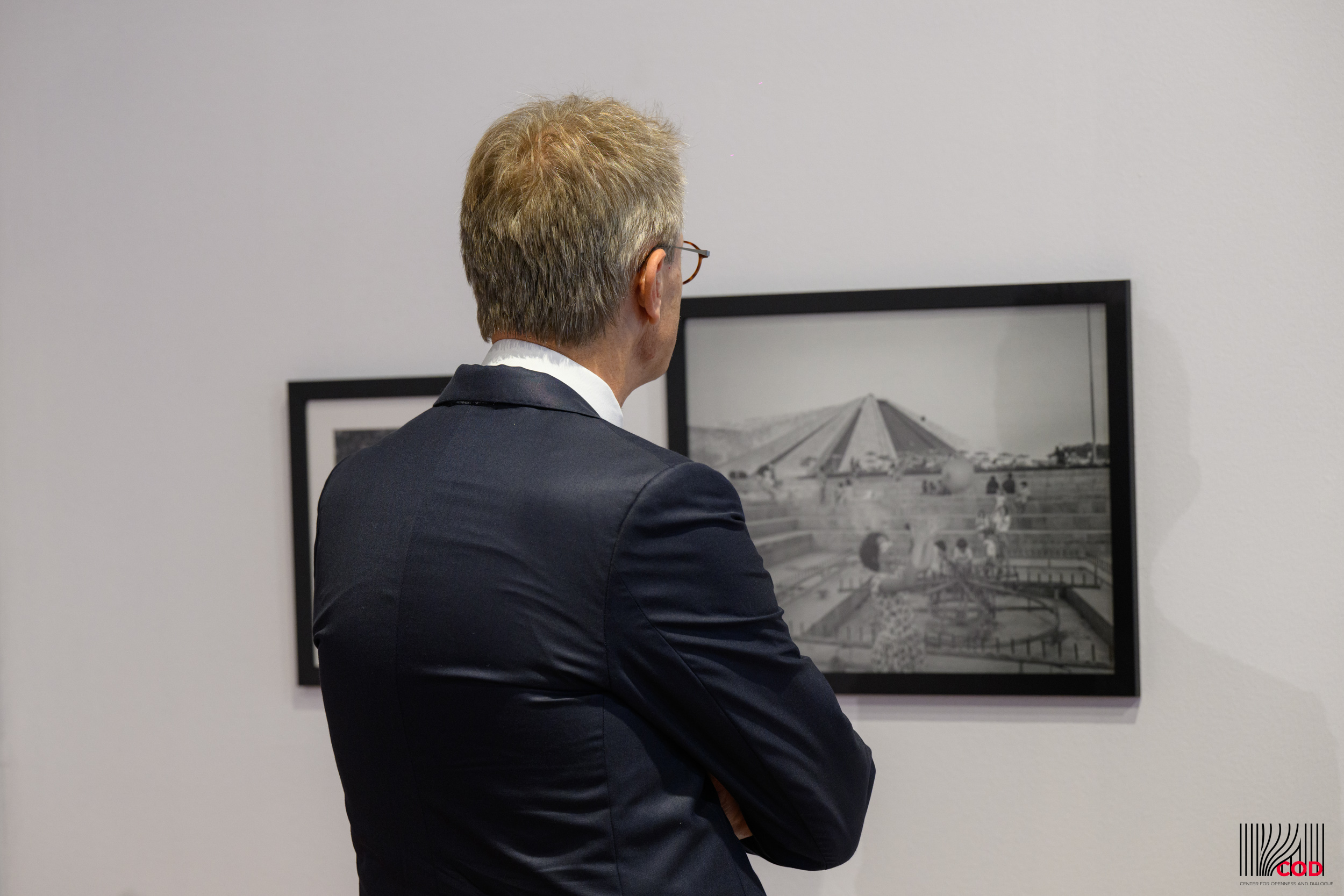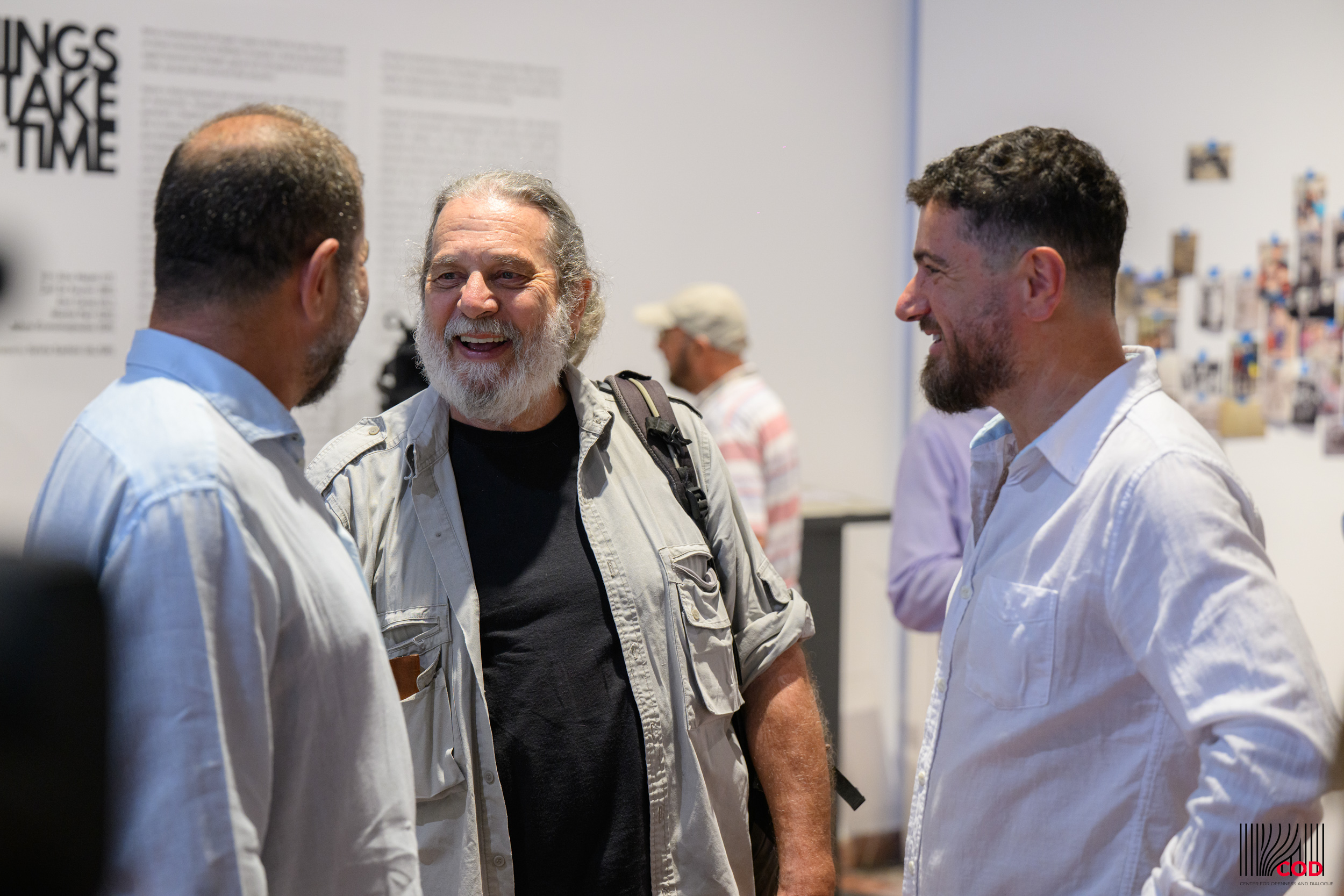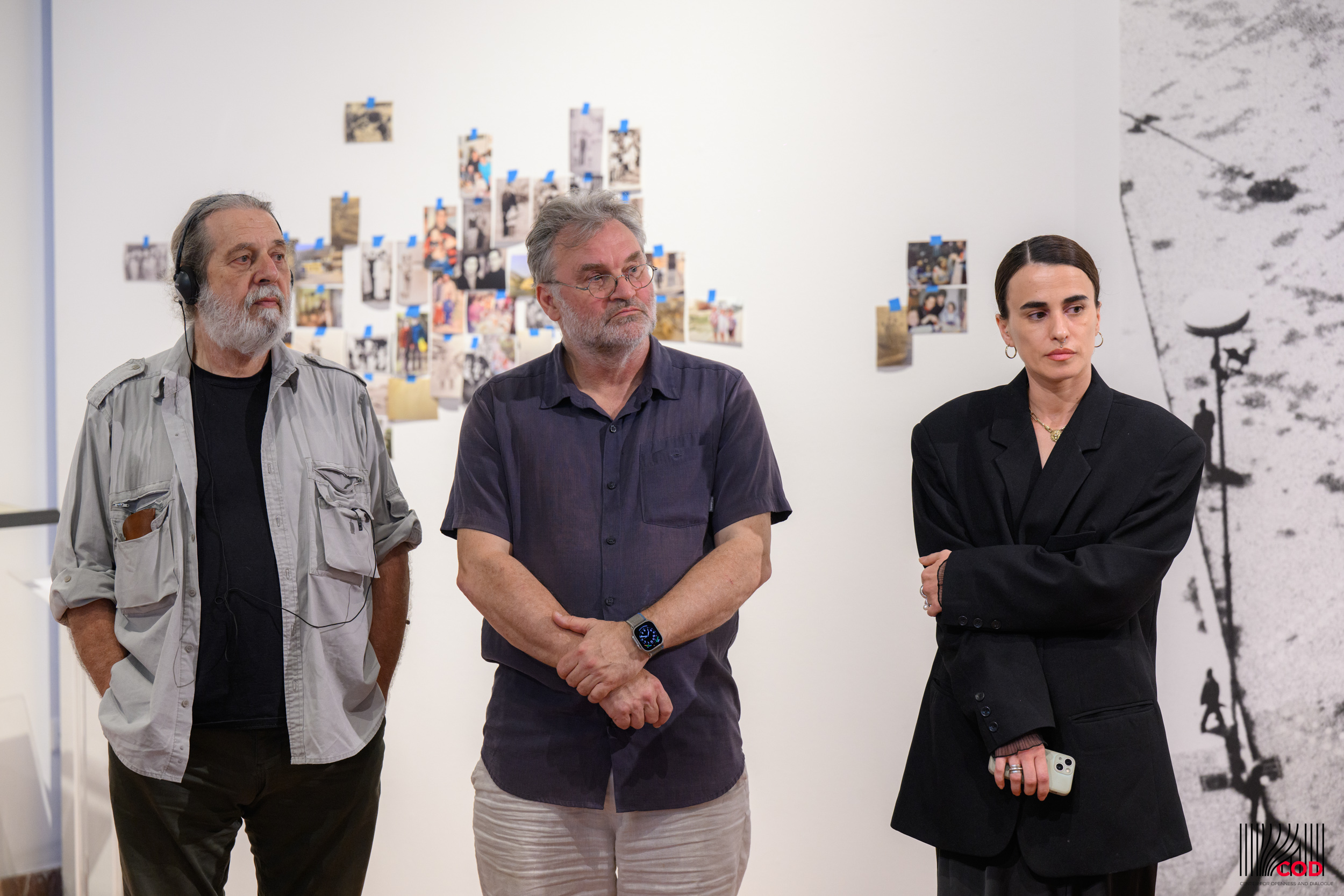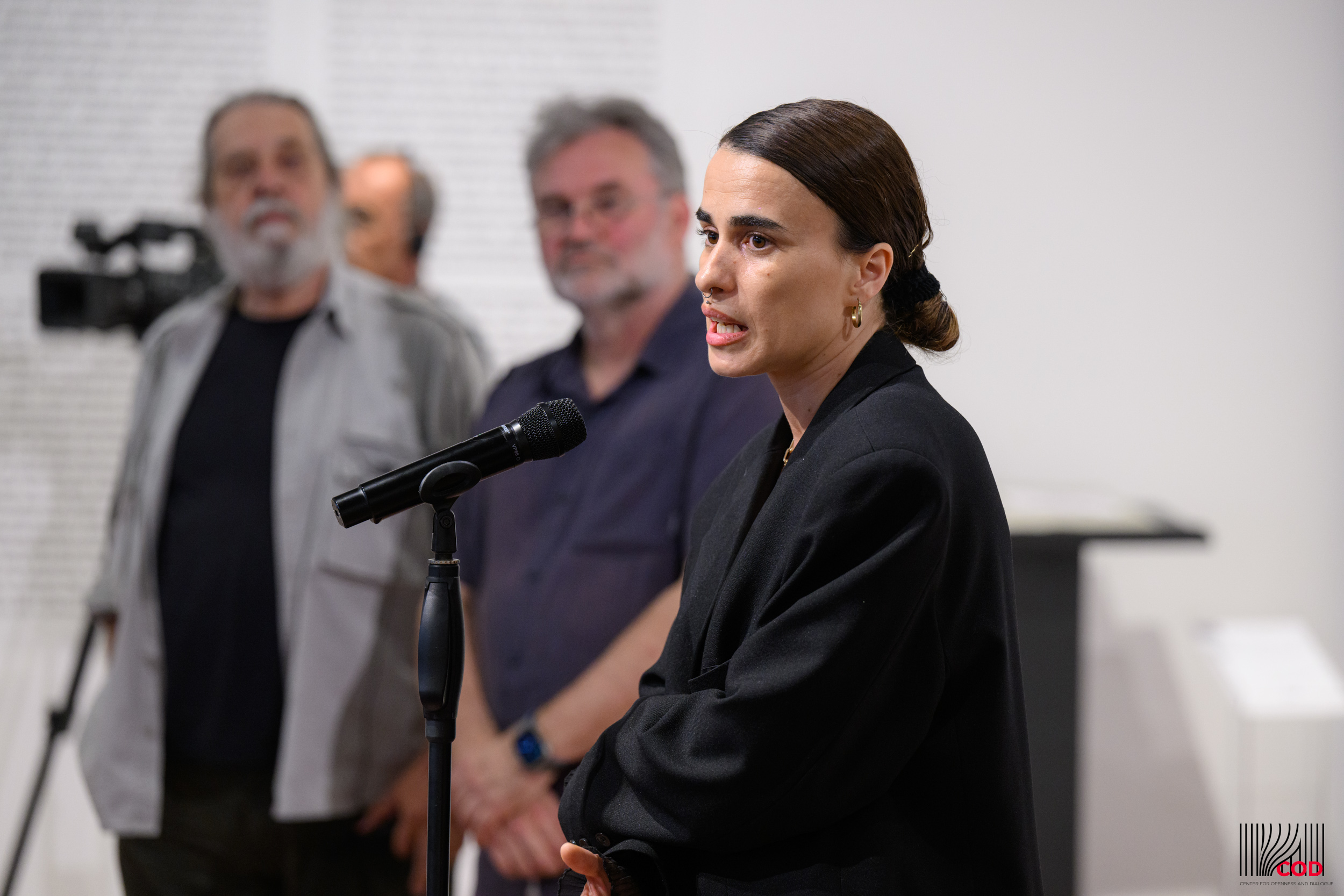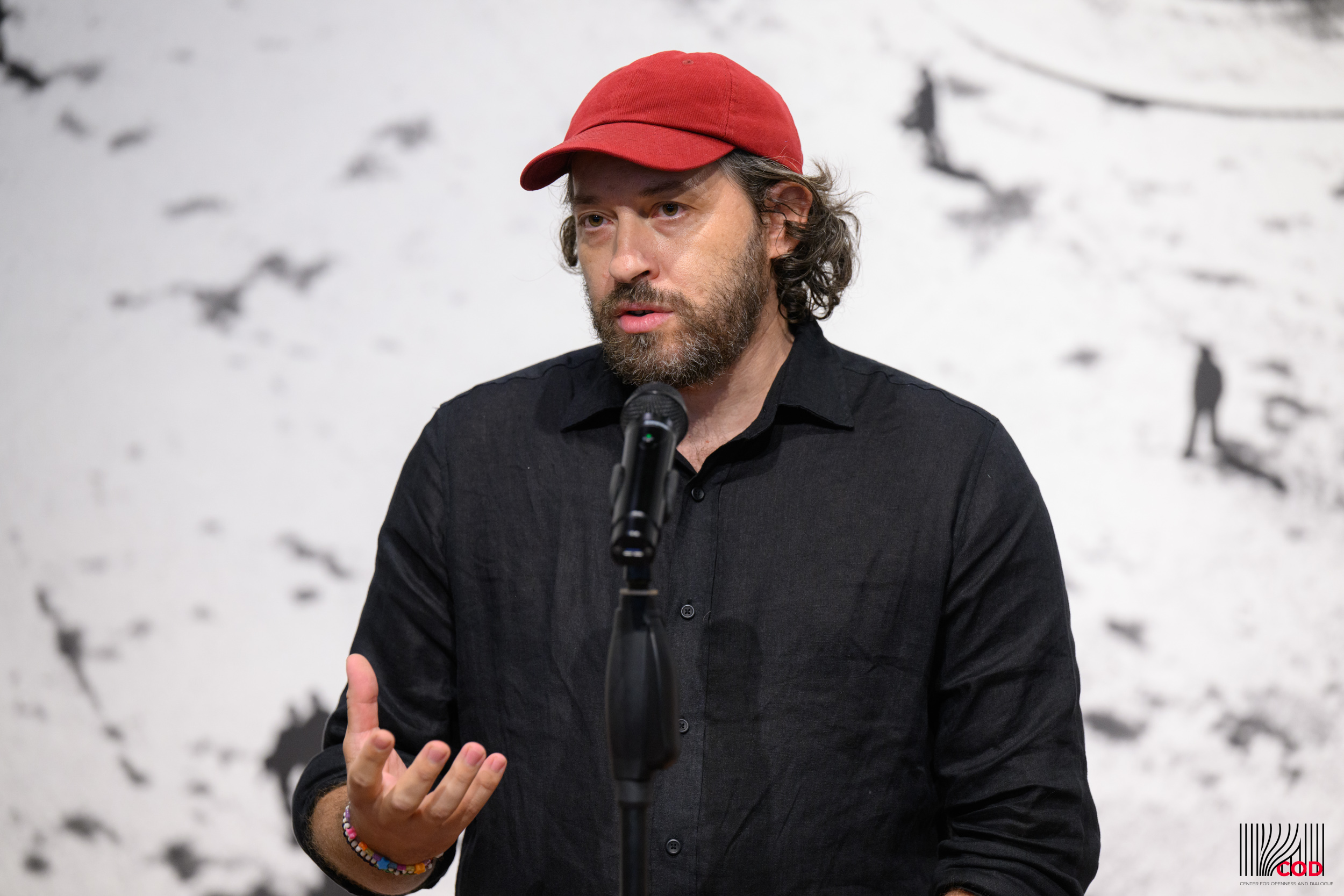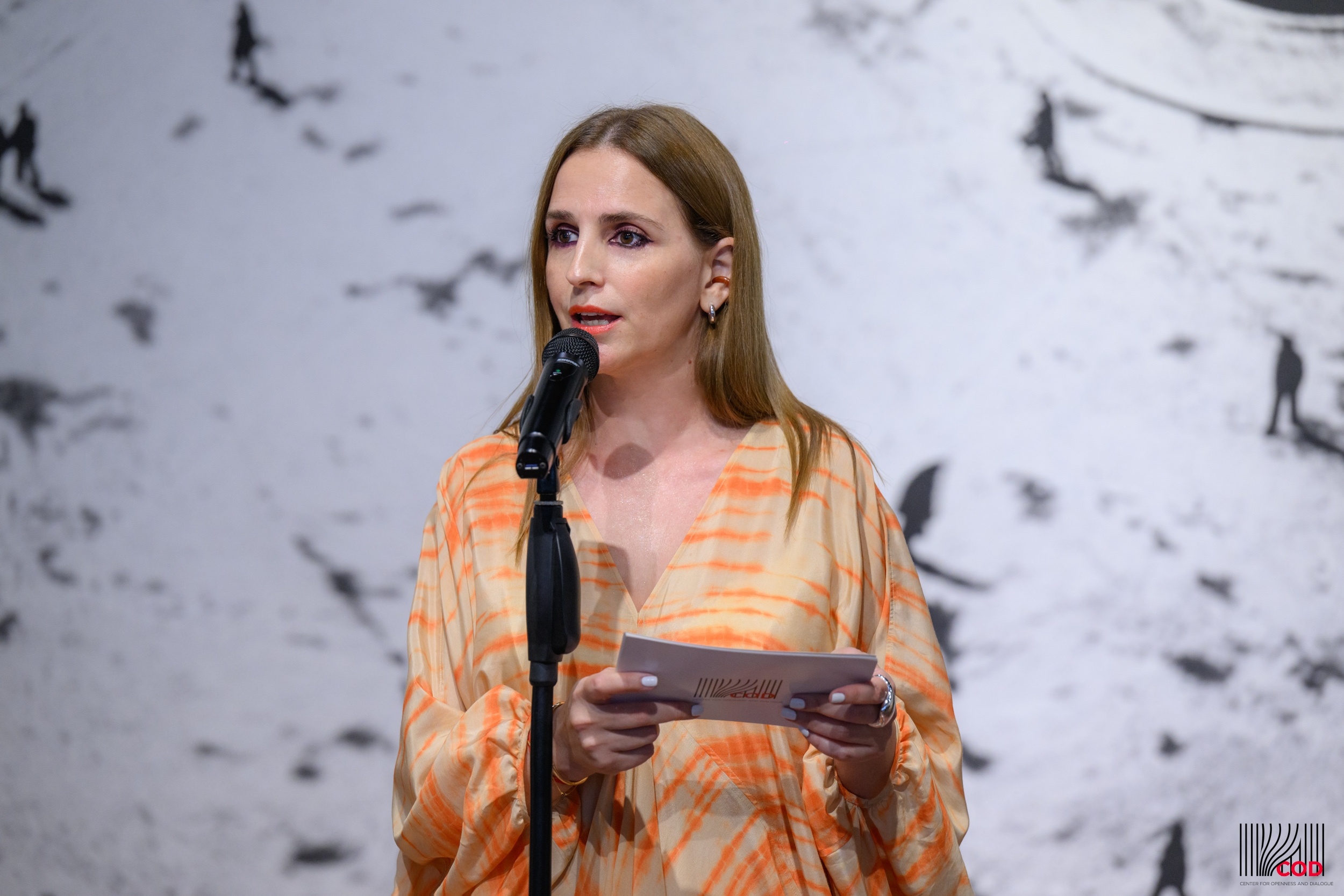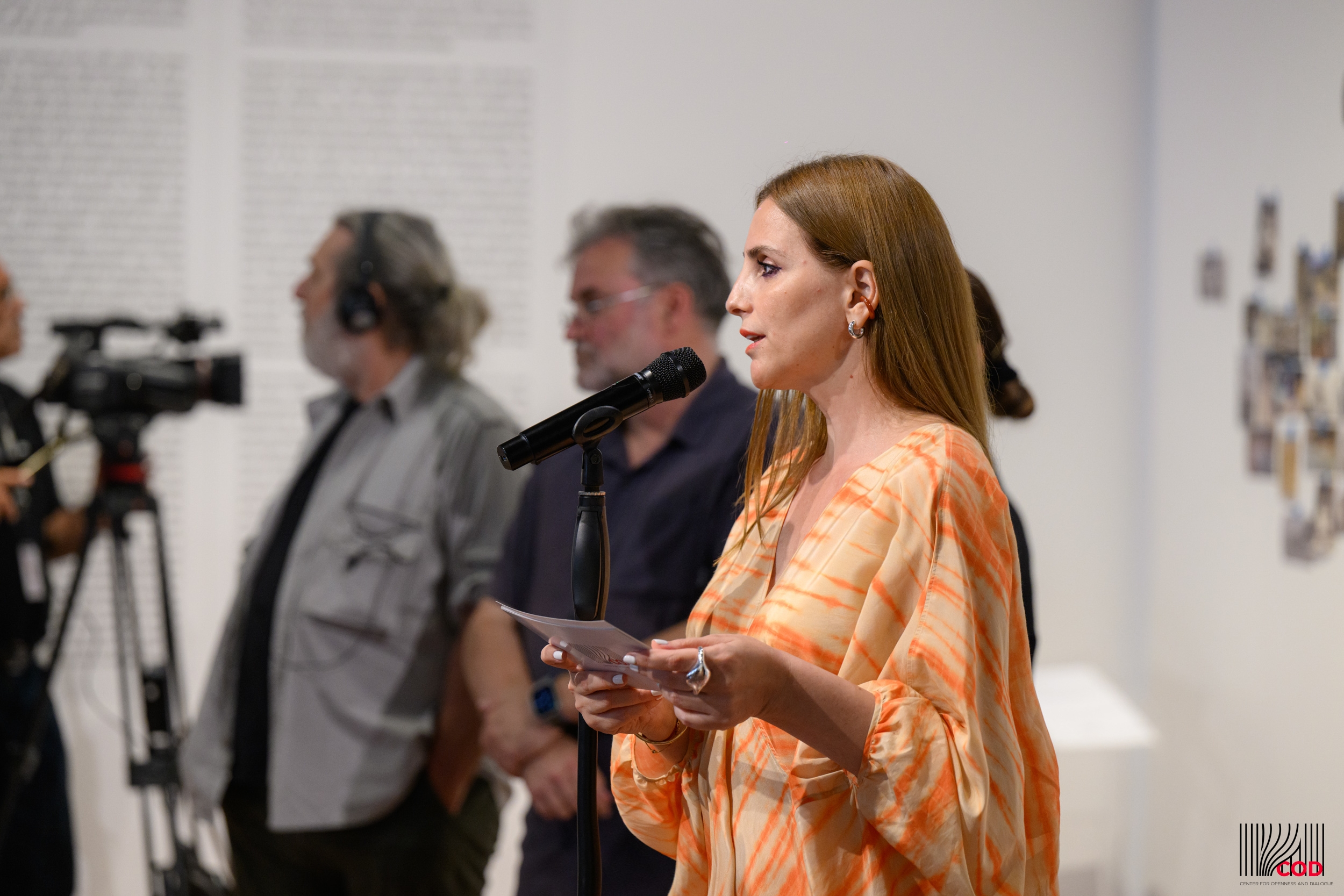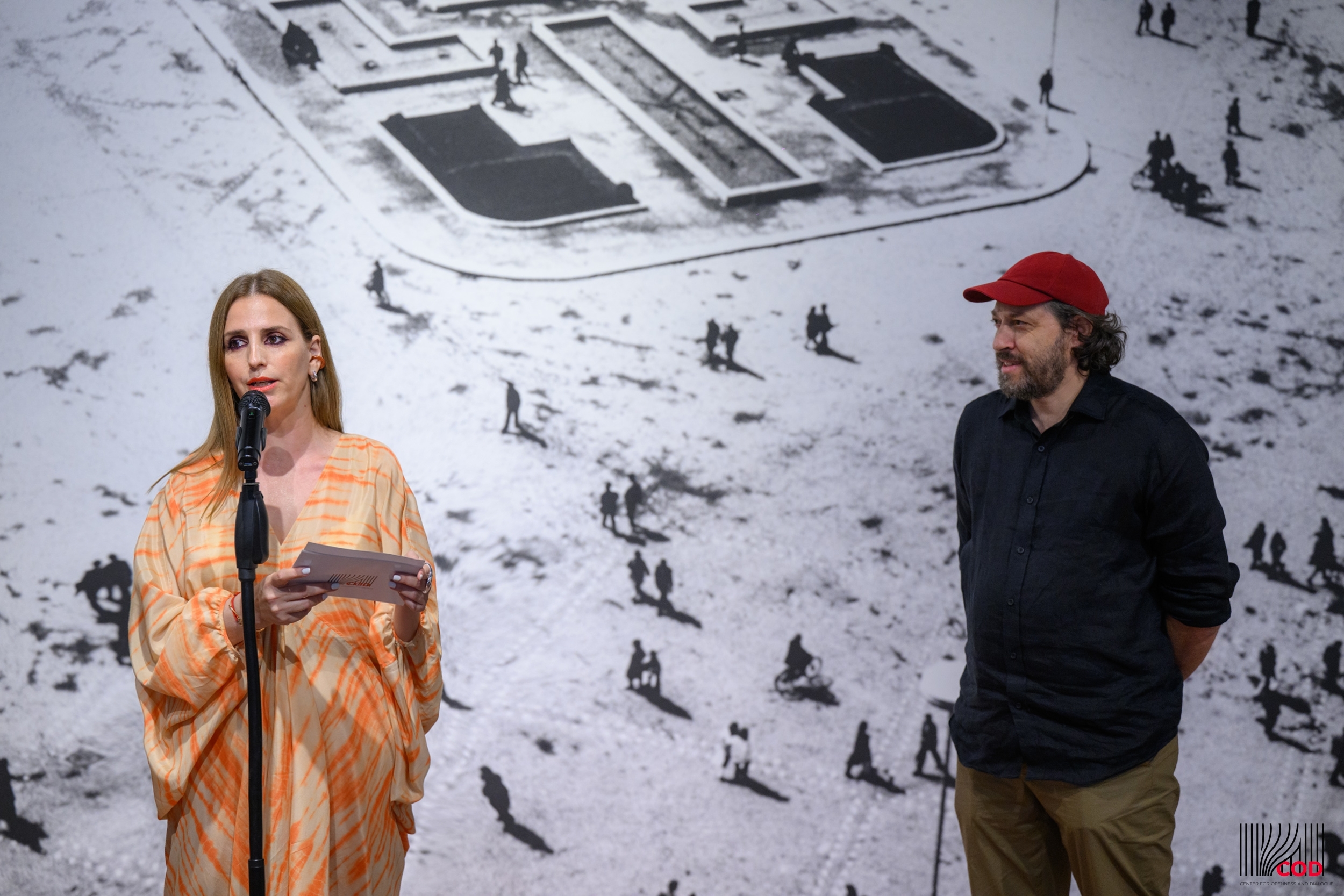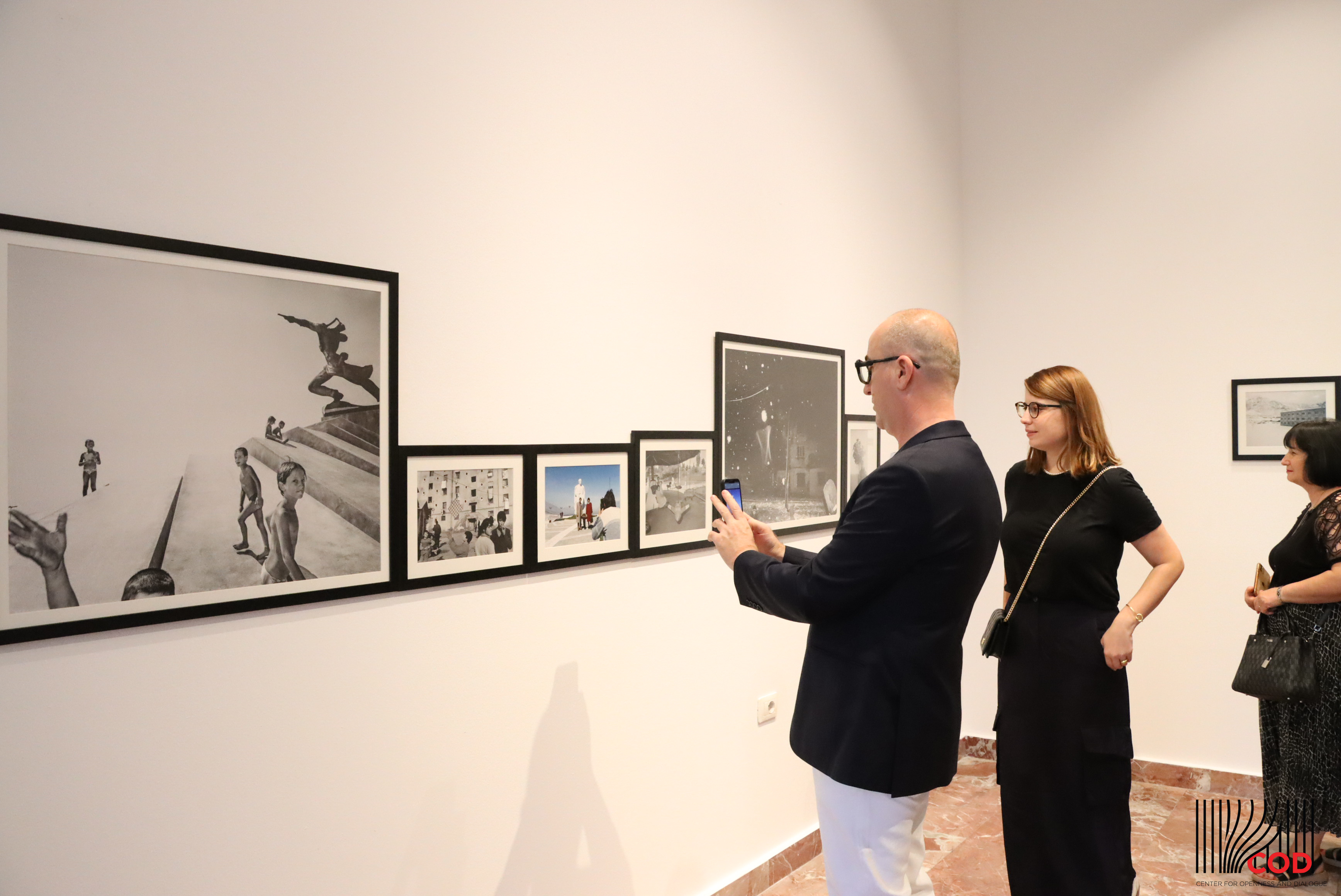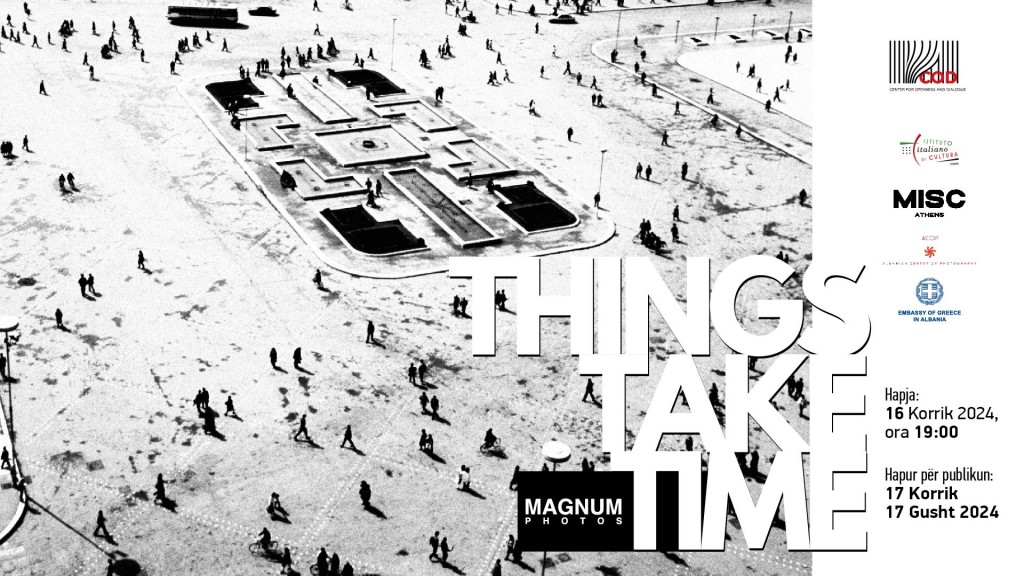
Curated by: Sylvia Sachini
Things Take Time (AL)
Rënia e komunizmit në Evropën Lindore në fillim të viteve ‘90 çoi edhe në rënien e komunizmit në Ballkan. Si pasojë, u shemb gradualisht edhe regjimi komunist në Shqipëri, gjë që solli një kapitull të ri në historinë e vendit, një periudhë tranzicioni dhe ndryshimi.
Veprat e kësaj ekspozite janë realizuar në vitet 1991-2010. Pas rënies së komunizmit, fotografëve iu mundësua dokumentimi i lirë dhe i paanshëm i Shqipërisë, pasi më parë vendi ishte në gjendje të izoluar dhe të shkëputur nga bota. Këto vepra janë të një rëndësie të madhe, pasi shërbejnë si dëshmi historike dhe çojnë në një kuptim më të thellë të Shqipërisë së sotme dhe të vendeve të tjera të Ballkanit, historia e të cilave ka qenë gjithmonë e ndërlidhur dhe e ndërvarur. Periudha në të cilën filluan të realizoheshin këto vepra, ishte vendimtare për historinë e vendit, pasi ishte një kohë tranzicioni, një situatë e paprecedentë për popullsinë. Rënia e komunizmit dhe pasojat e tij ishin të dukshme në shoqëri, pasi njerëzit u përballën me ndryshime të mëdha dhe papritmas u prezantuan me një mënyrë të re jetese. Përvetësimi i stilit të jetesës perëndimore ishte i pashmangshëm, ndërkohë që njerëzit dalëngadalë po çliroheshin nga frika e regjimit, i cili deri atëherë kishte krijuar një gjendje të vazhdueshme mbikëqyrjeje, të rrënjosur thellë në shoqëri. Njerëzve iu dha mundësia të informoheshin nga mediat ndërkombëtare dhe burime të pavarura, ndërkohë që emigracioni, i cili deri atëherë ishte i ndaluar, u rrit ndjeshëm. Ishte i dukshëm fakti që Shqipëria po kalonte nga një gjendje izolimi dhe shtypjeje në një shtet të ri, ku populli thirrej të ishte më i hapur ndaj ndryshimeve. Kishte një nevojë gjithëpërfshirëse për ndryshim, një ndjenjë se të gjithë po vraponin drejt diçkaje të re, një vrull. Situata ishte pa diskutim e paprecedentë, pasi kjo gjendje ndryshimi më parë perceptohej si e pamundur.
Puna e paraqitur nga fotografët MAGNUM, Alex Majoli (IT) Carl De Keyzer (BE), Enri Canaj (AL), Martin Parr (MB) dhe Nicos Economopoulos (GR) përbën një përpjekje për të pasqyruar këtë periudhë, një gjendje tranzicioni të dokumentuar nga artistë me prejardhje të ndryshme, ku secili përshkruan vizualisht situatën, nxitur nga përvojat personale dhe origjina e tij, por me një temë të përbashkët. Ky grup i gjerë pune i ofron shikuesit një imazh të larmishëm të Shqipërisë, duke dokumentuar faza të ndryshme të historisë së vendit gjatë periudhave të ndryshimeve shoqërore dhe ekonomike. Ata ishin të parët që mbërritën në Shqipëri pas rënies së regjimit komunist dhe fotografuan për periudha të gjata kohore, duke krijuar kështu një imazh të përgjithshëm të Shqipërisë, secili sipas estetikës së vet. Larmia e interpretimit vizual të realitetit bashkëkohor shqiptar është një element bazë i kësaj ekspozite. Qasjet artistike ndaj rrethanave politike dhe shoqërore të vendit janë sa realiste aq edhe abstrakte, ku secila prej tyre e përshkruan gjendjen e tranzicionit në mënyra të ndryshme. Duke marrë në konsideratë historinë e vendit, kjo ekspozitë synon të ruajë kujtimin e kësaj periudhe në Shqipëri. Ajo paraqet një realitet historik që mund të funksionojë si një temë diskutimi për gjendjen aktuale të vendit, në dialog me të shkuarën, thënë kjo me bindjen se e shkuara, e tashmja dhe e ardhmja janë gjithmonë të ndërlidhura.
Things Take Time (EN)
The fall of communism in Eastern Europe in the early 1990s also led to the fall of communism in the Balkans. Subsequently, the communist regime in Albania gradually collapsed, resulting in a new chapter in the country’s history, a period of transition and change.
The body of work exhibited was created between 1991 – 2010. After the collapse of communism, photographers could freely and impartially document Albania, as the country was previously isolated and alienated from the world. This work is crucial as it not only provides historical evidence but also enhances contemporary understanding of Albania and the interconnected history of the Balkan countries. The period of time in which this work started was important within the history of the country, as it was a time of transition and an unprecedented situation for its people. The collapse of communism had profound effects on society, as people faced significant changes and a sudden shift to a new way of living. The adoption of a Western lifestyle became inevitable as individuals gradually freed themselves from the regime’s pervasive surveillance and fear. People were exposed to international media and independent sources, while immigration, which until then was banned, significantly increased. The fact that Albania was transitioning from a state of isolation and introversion to a newfound state, where its people were called to be open to change, was clear. There was a comprehensive need for growth, a feeling that everybody was running towards something new, a newfound momentum. The situation was indisputably unprecedented, as the idea of change was previously perceived to be impossible.
The work presented by MAGNUM photographers, Alex Majoli (IT), Carl De Keyzer (BE), Enri Canaj (AL), Martin Parr (UK), and Nicos Economopoulos (GR) reflects the state of transition through the perspectives of artists from diverse backgrounds. Each photographer visually captures the situation, influenced by their personal experiences and origins, yet united by a common subject. This well-rounded body of work provides the viewer with a diverse image of Albania, documenting various stages of the country’s history during periods of social and economic change. They were the first to arrive in Albania, after the fall of the communist regime, and photographed it for long periods of time, resulting in an overall image of Albania, each of them according to their own aesthetic. The diversity in visual interpretations of contemporary Albanian reality is a fundamental element of this exhibition. The photographers’ artistic approaches to the country’s political and social circumstances range from realistic to abstract, each depicting the state of transition in unique ways. Taking into consideration the history of the area, this exhibition intends to preserve the memory of this period in Albania. The exhibit demonstrates a historical reality that can function as a motive to open a discussion about the current state of the country, in dialogue with the past, with the conviction that the past, present and future are tightly interwoven.
Autor Bio
Alex Majoli (IT)
At the age of 15, Alex Majoli joined the “F45 Studio” in Ravenna, working alongside Daniele Casadio. While studying at the Art Institute in Ravenna, he joined “Grazia Neri Agency” and traveled to Yugoslavia to document the conflict. He returned many times over the next few years, covering all major events in Kosovo and Albania. Majoli graduated from art school in 1991. Three years later, he created an intimate portrayal of the closing of an asylum on the island of Leros, Greece, a project that became the subject of his first book, Leros. In 1995 Majoli went to South America for several months, photographing a variety of objects for his ongoing personal project, Requiem in Samba. He started the project “Hotel Marinum” in 1998, centered on life in coastal cities around the world, with a final goal of performing a theatrical multimedia show. That same year he began making a series of short films and documentaries. After becoming a full member of Magnum Photos in 2001, Majoli covered the fall of the Taliban regime in Afghanistan, and two years later the invasion of Iraq. He continues to document various conflicts worldwide for Newsweek, The New York Times Magazine, Granta and National Geographic. Majoli, in collaboration with Thomas Dworzak, Paolo Pellegrin, and Ilkka Uimonen, had an extremely successful exhibition and installation “Off Broadway” in New York in 2004, which even traveled to France and Germany. He then became involved in a project for the French Ministry of Culture entitled BPS, or Bio-Position System, about the social transformation of the city of Marseilles. His project, “Libera Me”, is a reflection on the human condition.
Alex Majoli (IT)
Në moshën 15-vjeçare, Alex Majoli iu bashkua “Studio F45” në Ravenë, duke punuar së bashku me Daniele Casadio-n. Teksa studionte në Institutin e Artit në Ravenë, ai iu bashkua agjencisë “Grazia Neri” dhe udhëtoi në Jugosllavi për të dokumentuar konfliktin. U kthye shpeshherë përgjatë këtyre viteve, duke mbuluar të gjitha ngjarjet kryesore në Kosovë dhe Shqipëri. Majoli mbaroi shkollën e artit në vitin 1991. Tre vjet më vonë, ai realizoi një projekt për mbylljen e një azili psikiatrik në ishullin Leros, Greqi, i cili u bë temë e librit të tij të parë, “Leros”. Në vitin 1995, Majoli shkoi në Amerikën e Jugut për disa muaj, ku fotografoi një sërë subjektesh për projektin e tij të ardhshëm personal, “Requiem in Samba”. Ai filloi projektin “Hotel Marinum” në vitin 1998, mbi jetën në qytetet portuale anembanë botës, qëllimi përfundimtar i të cilit ishte të jepte një shfaqje teatrale multimediale. Po atë vit, ai filloi të bënte një seri filmash të shkurtër dhe dokumentarë. Pasi u bë anëtar i plotë i Magnum Photos-it në vitin 2001, Majoli fotografoi rënien e regjimit taleban në Afganistan dhe dy vjet më vonë pushtimin e Irakut. Ai vazhdon të dokumentojë konflikte të ndryshme në mbarë botën për Newsweek, The New York Times Magazine, Granta dhe National Geographic. Majoli, në bashkëpunim me Thomas Dworzak-un, Paolo Pellegrin-in dhe Ilkka Uimonen-en realizoi një ekspozitë dhe instalacion jashtëzakonisht të suksesshëm “Off Broadway” në Nju-Jork në vitin 2004, i cili është ekspozuar gjithashtu në Francë dhe Gjermani. Më pas, ai u përfshi në një projekt të Ministrisë së Kulturës Franceze, të titulluar BPS, Bio-Position System, për transformimin shoqëror të qytetit të Marsejës. Projekti i tij, “Libera Me”, është një reflektim mbi gjendjen njerëzore.
Carl De Keyzer (BE)
Carl De Keyzer tackles large-scale themes through an accumulative, expansive approach. He builds up narratives through collected images, which often interact with text (taken from his travel diaries). In a series of large-format prints, he has explored India, the collapse of the Soviet Union and – more recently – modern-day power and politics in North Korea. His seminal project, God, Inc., captured religious life on the margins of American society. A fundamental premise in much of his work is that in overpopulated communities worldwide, disaster has already struck, and infrastructures are nearing collapse. Born in Belgium, De Keyzer’s career as a freelance photographer began in 1982 while he was simultaneously working as a photography instructor at the Royal Academy of Fine Arts in Ghent. At the same time, his interest in the work of other photographers led him to co-found and co-direct the “XYZ-Photography Gallery”. De Keyzer has worked on assignments for publications including: The New York Times, TIME Asia, Rolling Stone, LA Times and The Guardian. Commercial clients include Coca-Cola, Ernst & Young, Hennessy, Diesel and Davos World Economic Forum.
A Magnum nominee in 1990, he became a full member in 1994.
Carl De Keyzer (BE)
Carl De Keyzer-i trajton tema të larmishme përmes një qasjeje akumuluese dhe të shtrirë gjerësisht. Ai ndërton narrativa përmes imazheve të mbledhura, të cilat shpesh shoqërohen me tekst (marrë nga ditarët e tij të udhëtimit). Në një seri printimesh në format të madh, ai ka fotografuar Indinë, rënien e Bashkimit Sovjetik dhe, së fundmi, pushtetin dhe politikën moderne në Korenë e Veriut. Projekti i tij themelor, God, Inc., trajton jetën fetare në skajet e shoqërisë amerikane. Një premisë bazë në pjesën më të madhe të punës së tij është se, në komunitetet e mbipopulluara, katastrofa tashmë ka ndodhur dhe infrastrukturat janë në prag të kolapsit. I lindur në Belgjikë, karriera e De Keyzer-it si fotograf i pavarur filloi në vitin 1982, ndërsa punonte si instruktor fotografie në Akademinë Mbretërore të Arteve të Bukura në Ghent. Në të njëjtën kohë, interesimi i tij për punën e fotografëve të tjerë e bëri bashkëthemelues të “Galerisë së Fotografisë XYZ”. De Keyzer-i ka punuar për gazeta të ndryshme, si: The New York Times, TIME Asia, Rolling Stone, LA Times dhe The Guardian. Klientë të tij tregtarë janë edhe Coca-Cola, Ernst & Young, Hennessy, Diesel dhe Forumi Ekonomik Botëror i Davos.
Kandidat për Magnum në vitin 1990, ai u bë anëtar i plotë në vitin 1994.
Enri Canaj (AL)
Enri Canaj was born in Tirana, Albania, in 1980. He spent his early childhood there before moving to Greece, when the Albanian borders opened in 1991. He studied photography at the Leica Academy in Athens and became a full member of Magnum Photos in 2021. The same year, Canaj published his first monograph, “Say Goodbye Before You Leave”. He is based in Athens and covers stories in Greece and the Balkans. Since 2008, Canaj has become a freelance photographer for major publications such as TIME LightBox, The New York Times Magazine, MSNBC Photography, Wall Street Journal, Vice, Financial Times, and Le Monde. He has received awards from the Manuel Rivera-Ortiz Foundation, LUMIX Festival for Young Photojournalism, NEON Foundation, iMEdD and Stavros Niarchos Foundation, as well as the Philip Jones Griffiths Award. Examples of his work have been exhibited at Rencontres d’Arles, Museum of Contemporary Art in Thessaloniki; LUMIX Festival in Hanover; Benaki Museum in Athens; Museum of Photography in Thessaloniki; BOZAR Center for Fine Arts in Brussels; Cultural Foundation of the National Bank of Greece in Athens; Bilgi Santral in Istanbul; the European Parliament in Brussels and Athens Photo Festival.
Enri Canaj (AL)
Enri Canaj ka lindur në Tiranë, Shqipëri, në vitin 1980. Këtu kaloi fëmijërinë e hershme përpara se të shpërngulej në Greqi, kur kufijtë e Shqipërisë u hapën në vitin 1991. Ai studioi për fotografi në Akademinë Leica në Athinë dhe u bë anëtar i plotë i Magnum Photos-it në vitin 2021. Po atë vit, Canaj botoi monografinë e tij të parë, “Thuaj lamtumirë para se të largohesh”. Ai jeton në Athinë dhe fotografon ngjarje në Greqi dhe në Ballkan. Që nga viti 2008, Canaj ka qenë fotograf i pavarur për gazeta të rëndësishme, si TIME LightBox, The New York Times Magazine, MSNBC Photography, Wall Street Journal, Vice, Financial Times dhe Le Monde. Ai ka marrë çmime nga fondacioni Manuel Rivera-Ortiz, festivali LUMIX për Fotogazetarinë e Re, fondacioni NEON, iMEdD dhe fondacioni Stavros Niarchos, si dhe çmimin Philip Jones Griffiths. Shembuj të punës së tij janë ekspozuar në Rencontres d’Arles, Muzeun e Artit Bashkëkohor në Selanik; LUMIX, festival në Hanover; Muzeun Benaki në Athinë; Muzeun e Fotografisë në Selanik; Qendrën për Artet e Bukura BOZAR në Bruksel; Fondacionin Kulturor të Bankës Kombëtare të Greqisë në Athinë; Bilgi Santral në Stamboll; Parlamentin Evropian në Bruksel dhe në Festivalin e Fotografisë të Athinës.
Martin Parr (UK)
Martin Parr’s unmistakable eye for the quirks of ordinary life has made him a distinctive voice in visual culture for more than 30 years. Known for his use of garish colors and esoteric composition, he has studied cultural peculiarities around the world from Japan to America, Europe, and in the United Kingdom, his home country. The themes of leisure, consumption and communication have been at the heart of his work, all of which are explored with penetrating irony. As photographer, filmmaker and collector, Parr has defined a generation. Parr was born in Epsom, Surrey, UK. When he was a boy, his budding interest in photography was encouraged by his grandfather George Parr, himself a keen amateur photographer. Parr studied photography at Manchester Polytechnic, from 1970 to 1973. Upon graduating, he worked at Manchester Council for Community Relations for three months and then started working towards his first exhibition, “Home Sweet Home”, at the Impressions Gallery in York, MB. Parr has published over 100 books of his own work and edited another 30. His work has appeared in solo and group exhibitions around the world. Parr has also curated many acclaimed shows including Strange and Familiar in March 2016, at the Barbican, London, which examined how international photographers from 1930s onwards have photographed in the UK. Parr has received numerous awards over the years including the Sony World Photography Award for “Outstanding Contribution to Photography” in April 2017, the Erich Salomon Prize in 2006 which resulted in the “Assorted Cocktail” show at Photokina and the Baume et Mercier award in 2008, in recognition of his professional career and contributions to contemporary photography. In Autumn 2017 the Martin Parr Foundation opened in Bristol. Parr’s major exhibition at the National Portrait Gallery opened in March 2019. He became a full member of Magnum Photos in 1994.
Martin Parr (MB)
Syri i pagabueshëm i Martin Parr-it për veçoritë e jetës së përditshme e ka bërë atë një zë të veçantë në kulturën vizuale për më shumë se 30 vjet. I njohur për përdorimin e ngjyrave të bukura dhe përbërjen ezoterike, ai ka studiuar veçoritë kulturore në mbarë botën nga Japonia në Amerikë dhe nga Evropa në vendin e tij të lindjes, Mbretërinë e Bashkuar. Temat, si koha e lirë, konsumi dhe komunikimi, janë qendra e punës së tij; të gjitha të eksploruara me një ironi depërtuese. Si fotograf, regjisor dhe koleksionist, Parr-i ka përcaktuar një brez. Ai ka lindur në Epsom, Surrey, MB. Kur ishte fëmijë, nisi të shfaqte interes për fotografinë, gjë që u nxit nga gjyshi i tij George Parr-i, i cili vetë ishte një fotograf i mprehtë amator. Parr-i studioi për fotografi në Politeknikun e Mançesterit, nga viti 1970 deri në vitin 1973. Pas diplomimit, ai punoi në Këshillin e Mançesterit për Marrëdhëniet me Komunitetin për tre muaj dhe më pas filloi të punojë për ekspozitën e tij të parë, “Shtëpi e ëmbla shtëpi”, në Galerinë Impressions në York, MB. Parr-i ka botuar mbi 100 libra të veprave të tij dhe ka redaktuar 30 libra të tjerë. Puna e tij është shfaqur në ekspozita vetjake dhe në ekspozita të realizuara në bashkëpunim me fotografë të tjerë në mbarë botën. Ai ka kuruar gjithashtu shumë shfaqje të mirënjohura, si “E çuditshme dhe e njohur” në mars të vitit 2016, në Barbican, Londër, ku paraqiti mënyrën se si fotografët ndërkombëtarë kanë fotografuar në MB nga vitet 1930 e në vazhdim. Parr-i ka marrë çmime të shumta përgjatë viteve, si: çmimin Sony World Photography Award për “Kontributin e Jashtëm në Fotografi” në prill të vitit 2017, çmimin Erich Salomon në 2006, i cili solli shfaqjen “Kokteje të shumëllojshme”, që u hap në Photokina dhe çmimin Baume et Mercier në 2008, si mirënjohje për karrierën e tij profesionale dhe kontributin në fotografinë bashkëkohore. Në vjeshtën e vitit 2017, në Bristol u hap fondacioni Martin Parr. Ekspozita e madhe e Parr-it në Galerinë Kombëtare të Portreteve u hap në mars të vitit 2019. Ai u bë anëtar i plotë i Magnum Photos-it në vitin 1994.
Nikos Economopoulos (GR)
Nikos Economopoulos was born in Peloponnese, Greece, in 1953. He then studied law and worked as a journalist in Parma, Italy. He started photography in Greece and Turkey and eventually abandoned journalism to dedicate himself to photography. He joined Magnum Photos in 1990 and his photographs began appearing in newspapers and magazines around the world. He started simultaneously traveling and pursuing photography extensively around the Balkans. This work won him the “Mother Jones Award”. Upon completion of his Balkans project in 1994, Economopoulos became a full member of Magnum Photos. His book, “In the Balkans”, was published in 1995 in New York and Athens. In the 1990s, Economopoulos started working on borders and crossings, photographing the inhabitants of the “Green Line” in Cyprus, the irregular migrants on the Greek-Albanian borderline, and the mass migration of ethnic Albanians fleeing Kosovo. In the mid-1990s, he started photographing the Roma and other minorities. In 2000, he completed a book project on the Aegean Islands storytellers, commissioned by the University of the Aegean. A retrospective of his work, titled Economopoulos, Photographer, was published in 2002 and later exhibited at the Benaki Museum in Athens, in 2005. Over the past decade, Economopoulos has shifted to color photography. He now spends most of his time abroad, traveling, teaching, and capturing images around the world.
Nikos Economopoulos (GR)
Nikos Economopoulos-i lindi në Peloponez, Greqi, në vitin 1953. Ai ka studiuar për drejtësi dhe ka punuar si gazetar në Parmë, Itali. Filloi të fotografonte në Greqi dhe Turqi dhe përfundimisht e braktisi gazetarinë për t’iu përkushtuar fotografisë. Ai bashkua me Magnum Photos në vitin 1990 dhe fotografitë e tij filluan të shfaqen në gazeta dhe revista në mbarë botën. Në të njëjtën periudhë, filloi të udhëtonte dhe të fotografonte gjerësisht nëpër Ballkan. Kjo vepër i dha atij çmimin “Mother Jones”. Pas përfundimit të projektit të tij në Ballkan në vitin 1994, Economopoulos-i u bë anëtar i plotë i Magnum Photos-it. Libri i tij, “Në Ballkan”, u botua në vitin 1995 në Nju-Jork dhe Athinë. Në vitet ‘90, Economopoulos-i filloi të punonte në kalimet kufitare ilegale, duke fotografuar banorët e “Vijës së gjelbër” në Qipro, emigrantët ilegalë në kufirin greko-shqiptar dhe emigrimin masiv të shqiptarëve etnikë që iknin nga Kosova. Në vitet ‘90, ai filloi të fotografonte romët dhe minoritarët e tjerë. Në vitin 2000, ai përfundoi një libër mbi tregimtarët e ishujve të Egjeut, porositur nga Universiteti i Egjeut. Një retrospektivë e punës së tij, e titulluar “Economopoulos, Fotograf”, u botua në vitin 2002 dhe më vonë u ekspozua në muzeun “Benaki” në Athinë, në vitin 2005. Gjatë dekadës së fundit, Economopoulos-i i është kthyer përdorimit të ngjyrave në fotografi. Ai aktualisht e kalon pjesën më të madhe të kohës jashtë Greqisë, duke udhëtuar, duke dhënë mësim dhe duke fotografuar nëpër botë.



